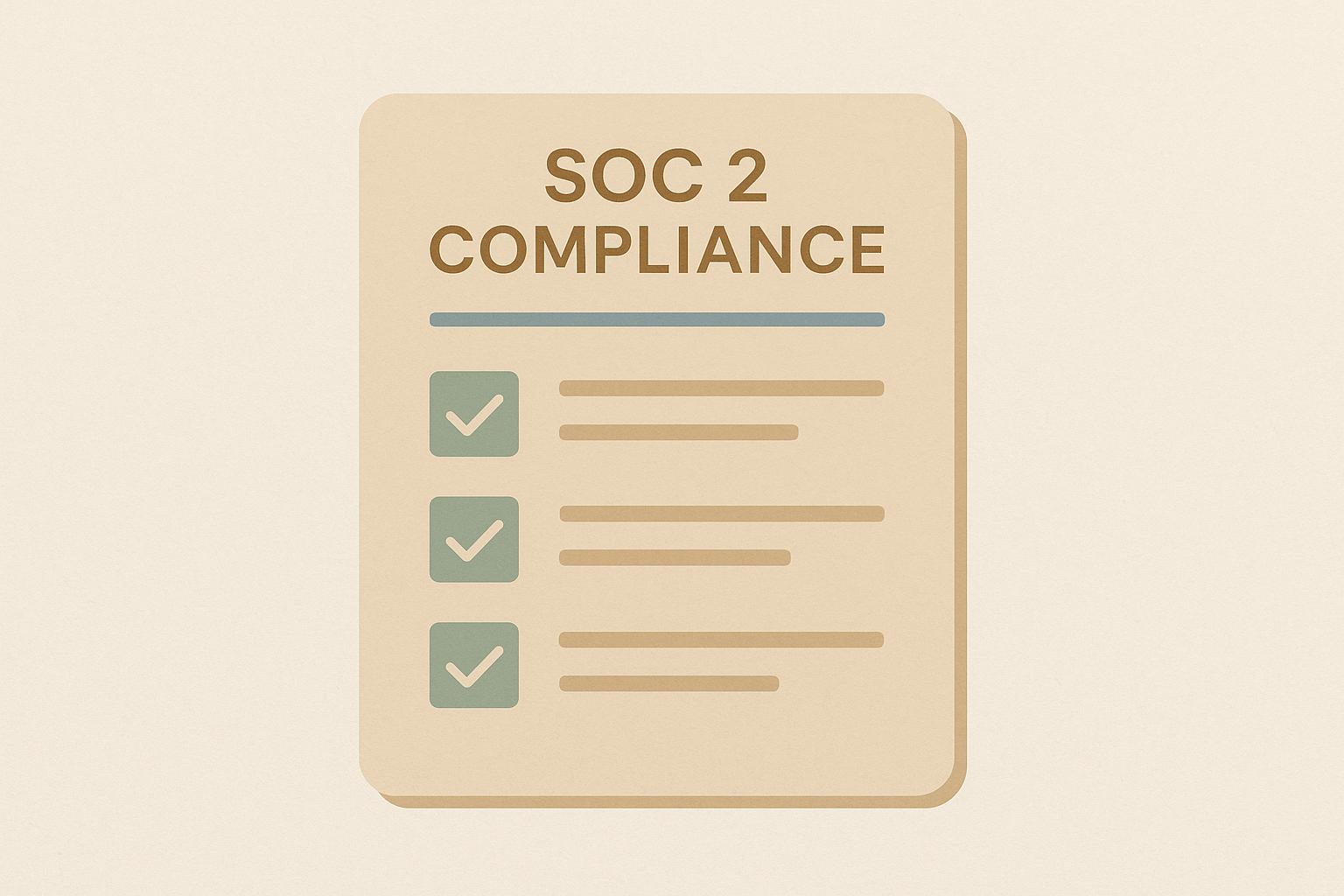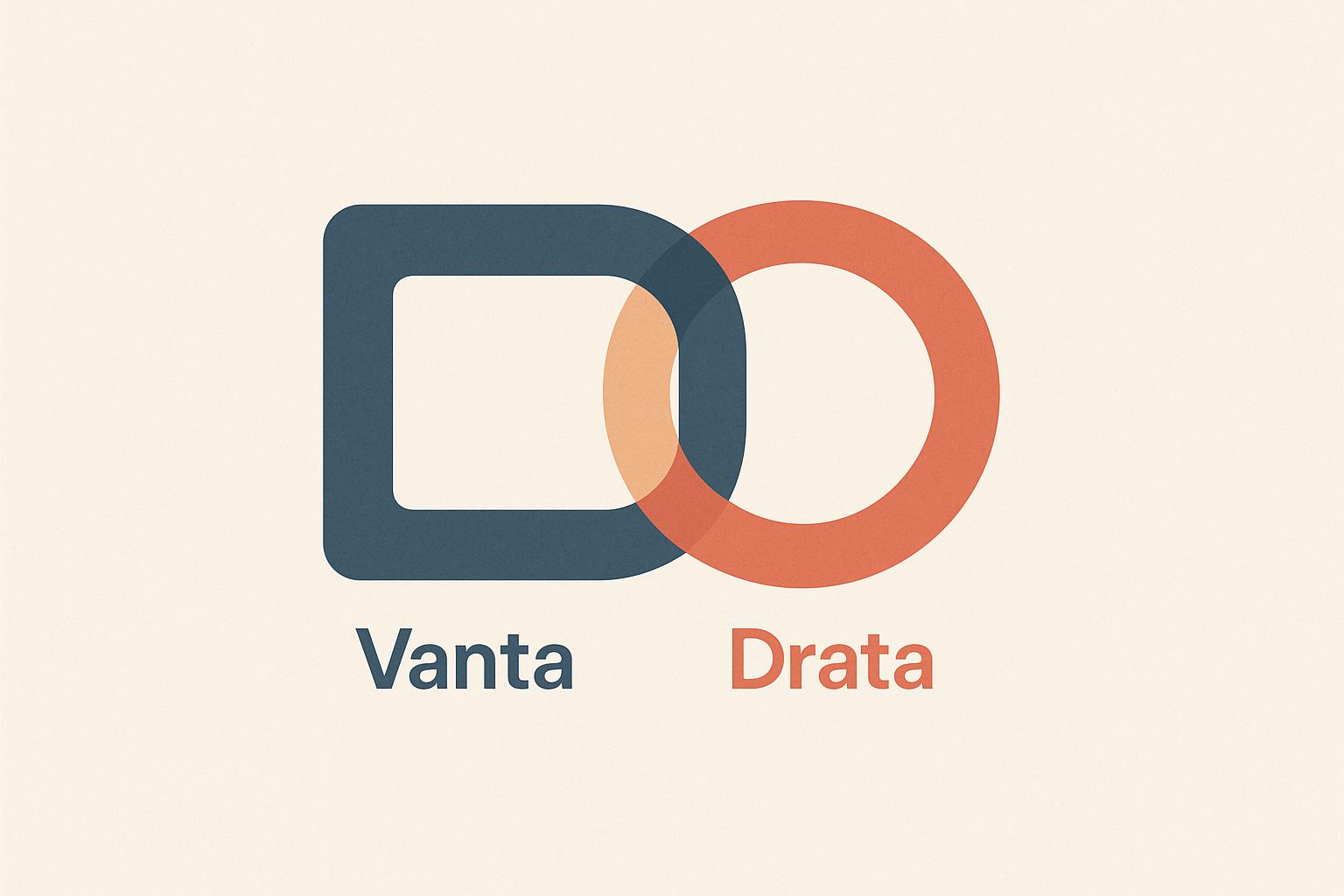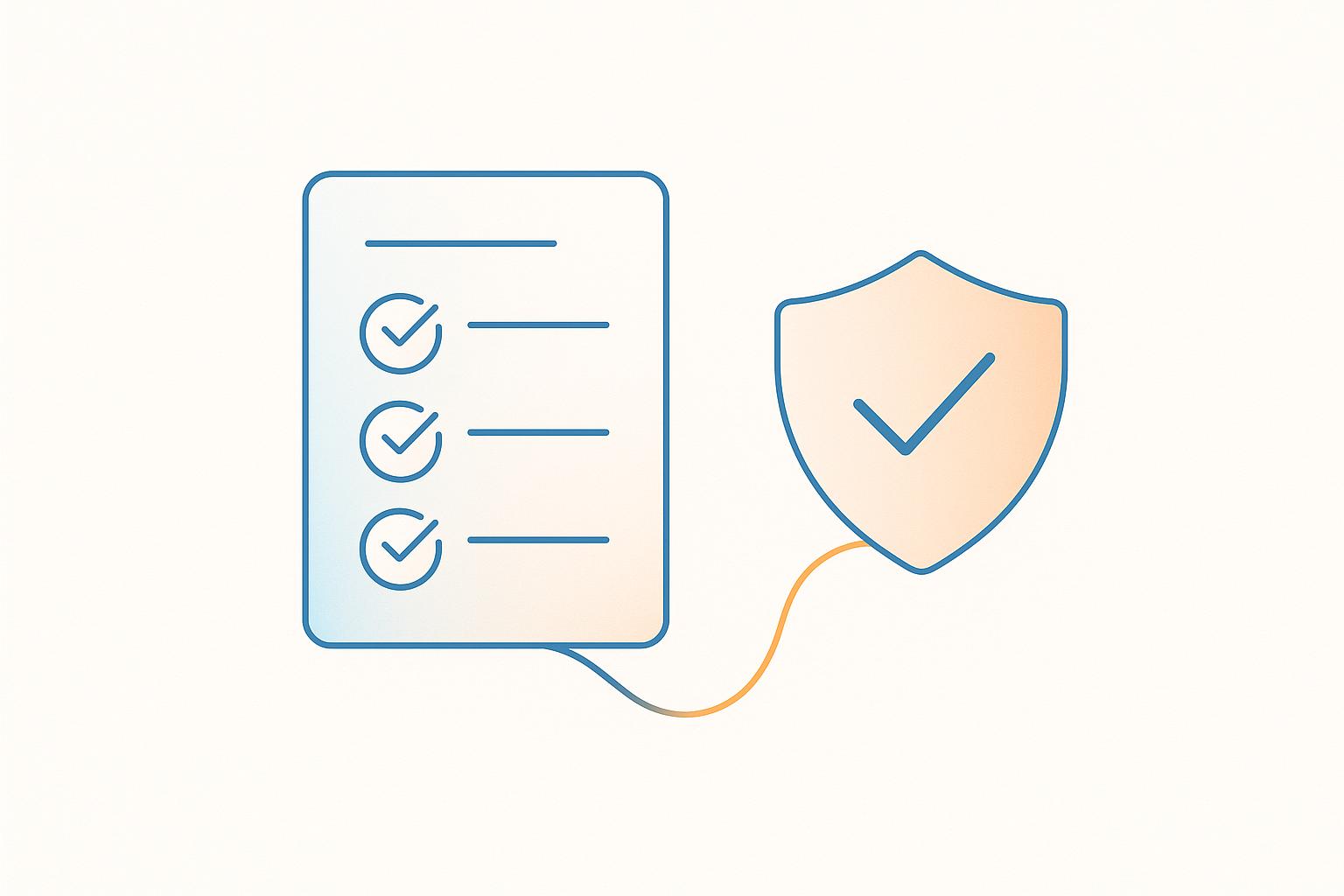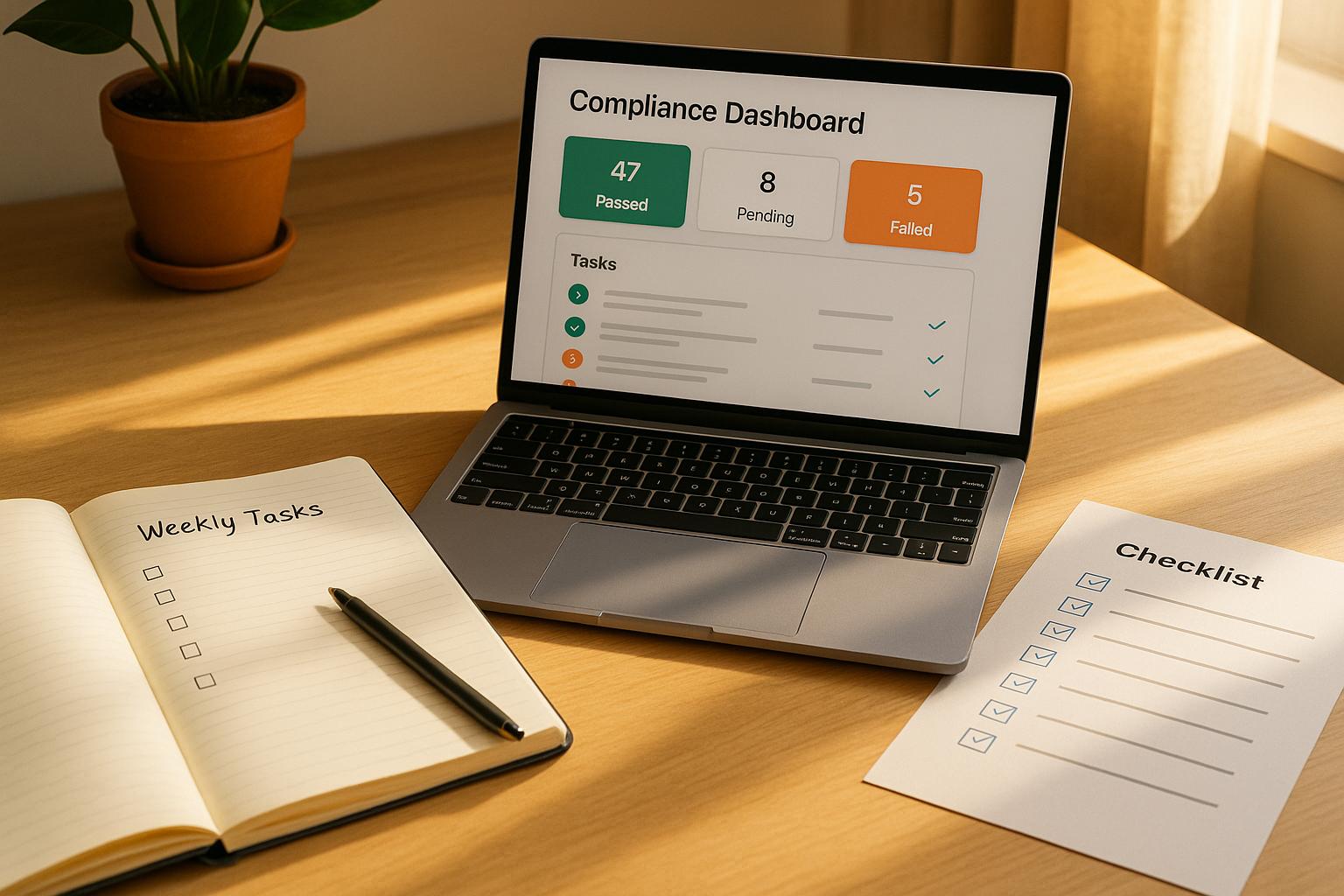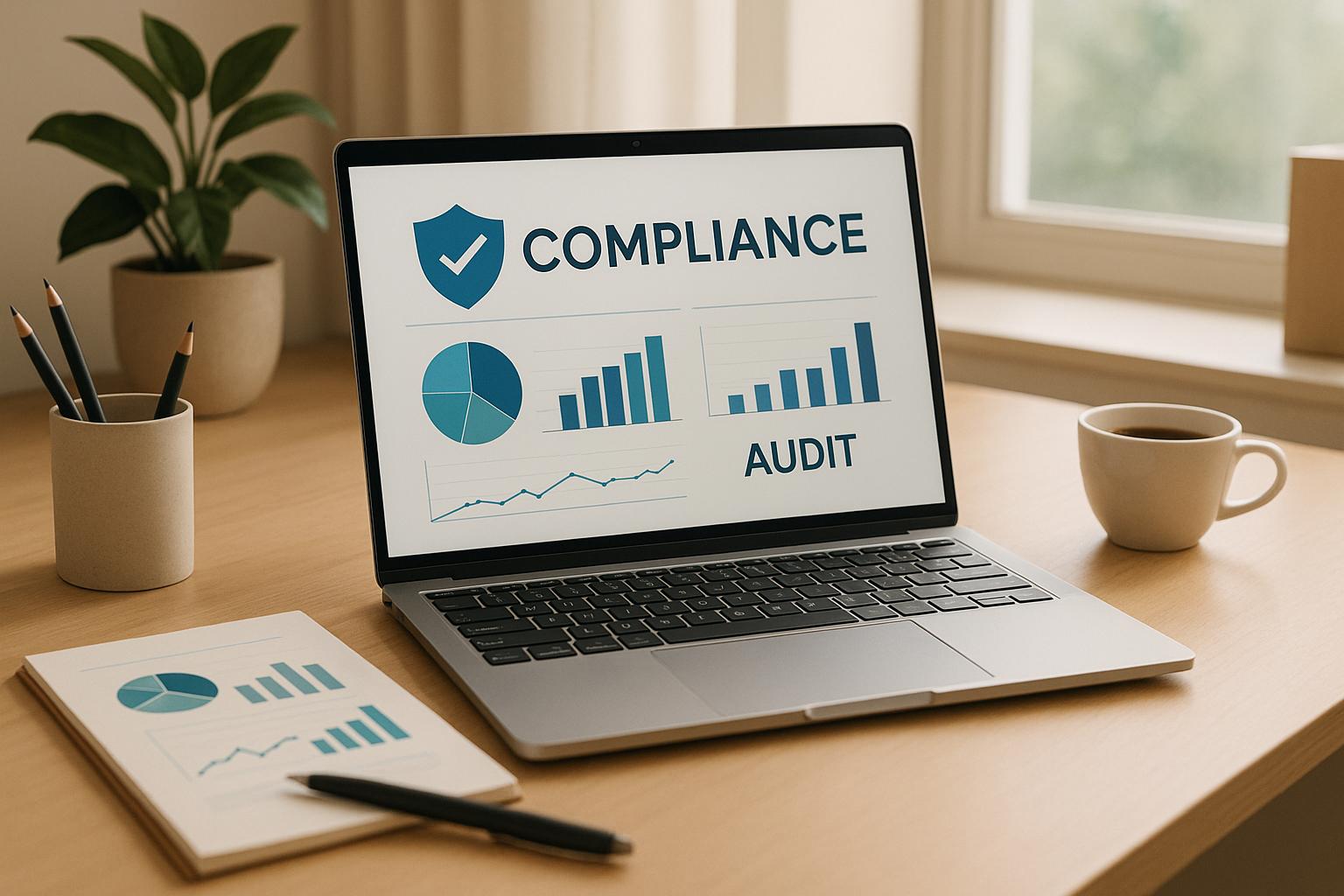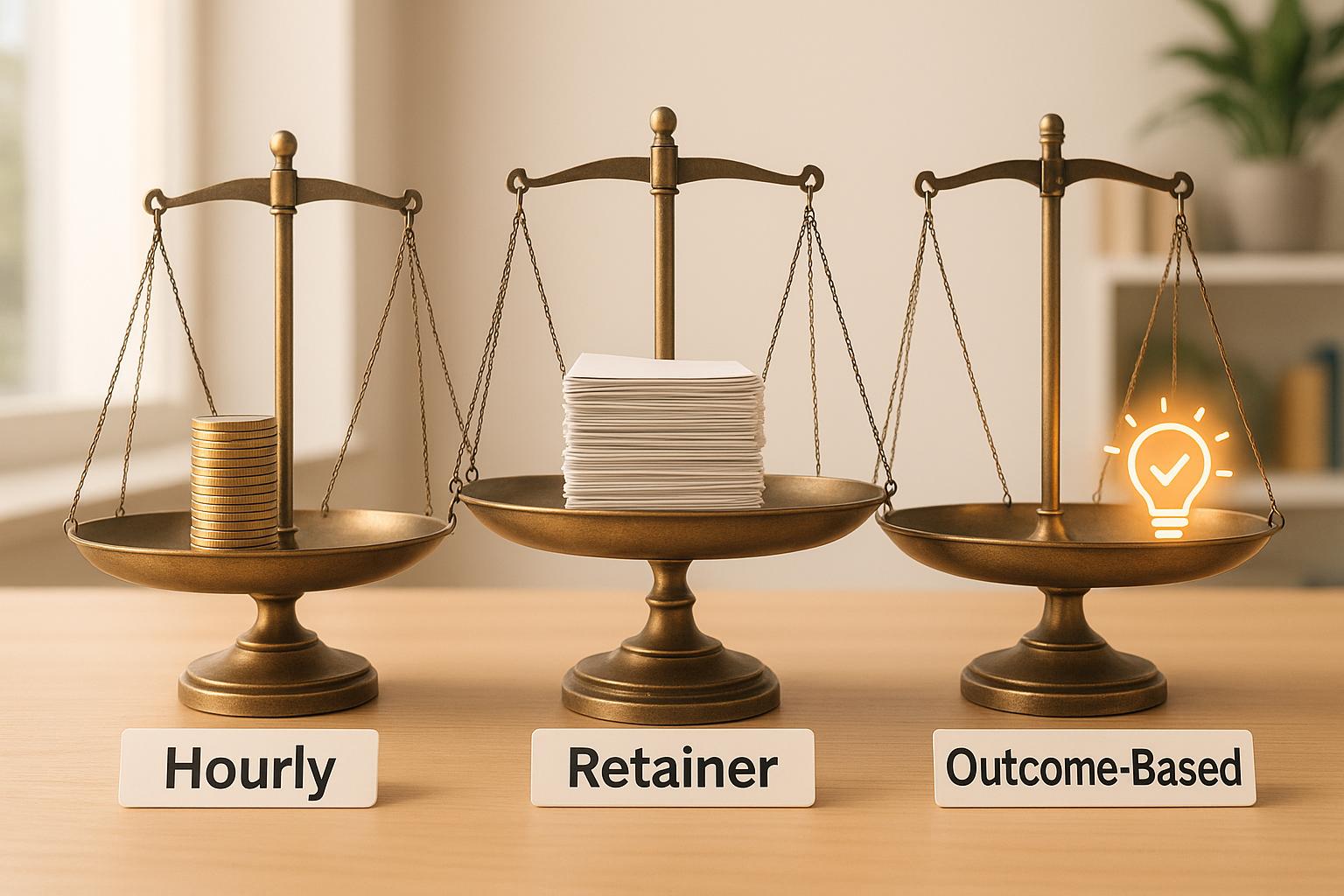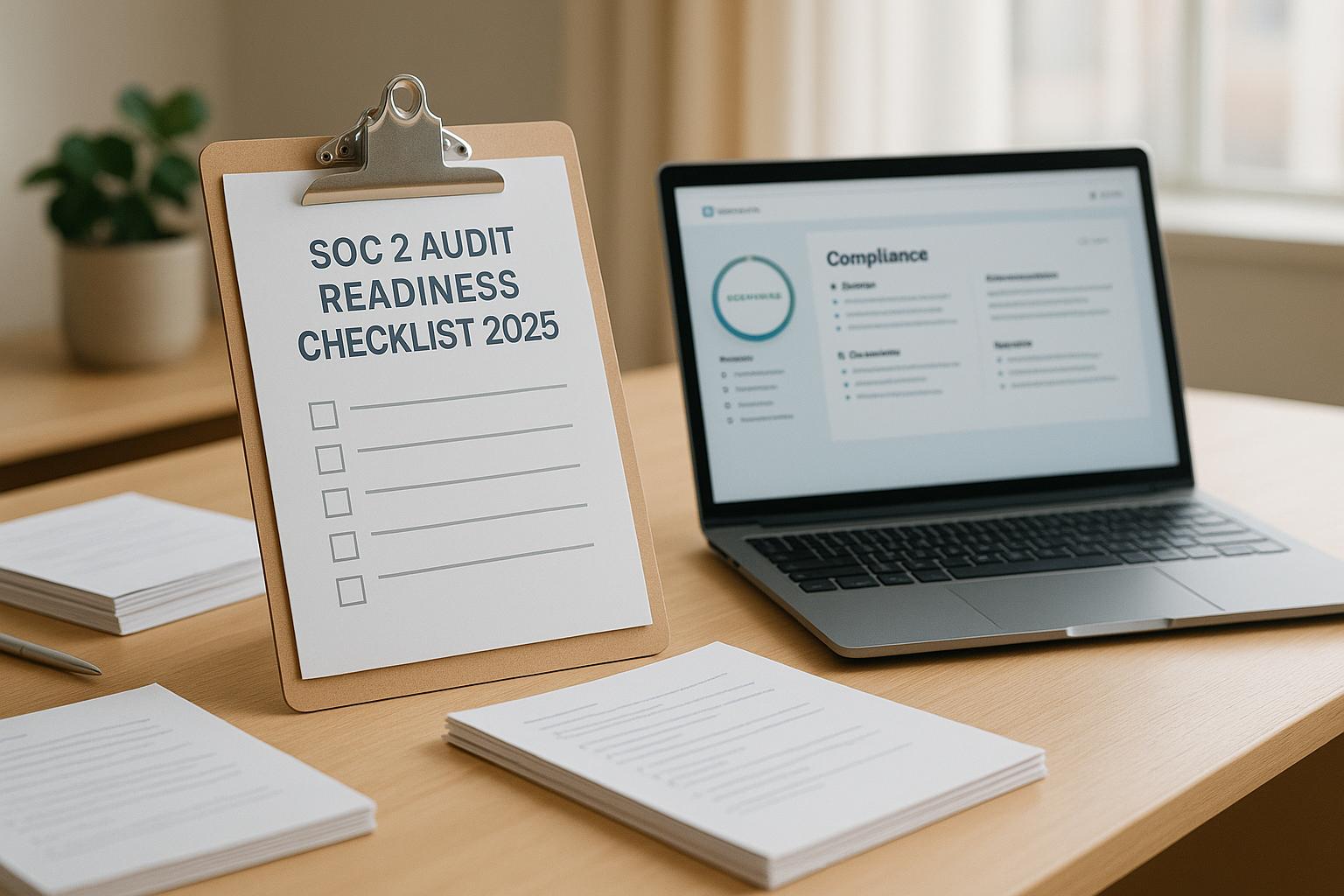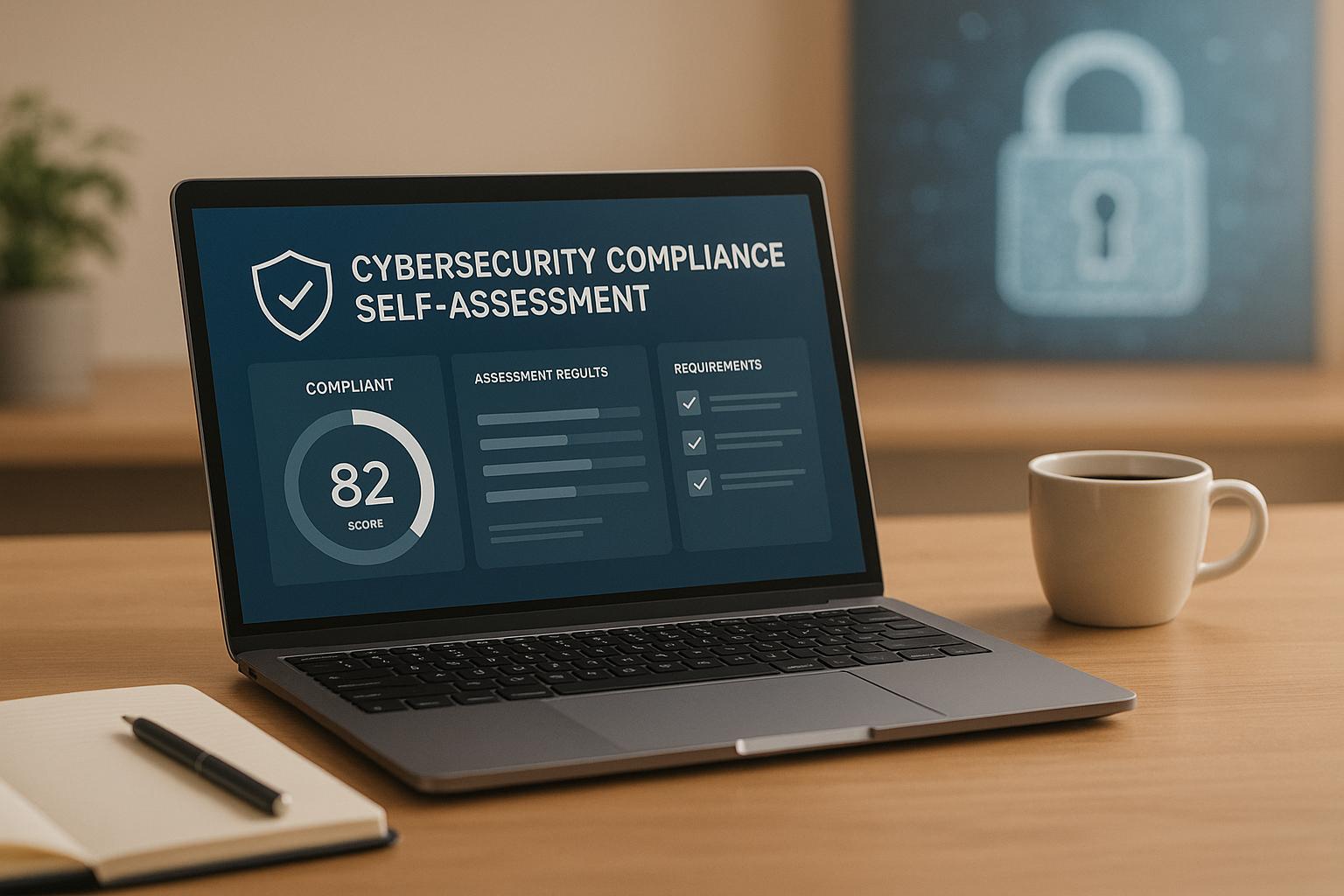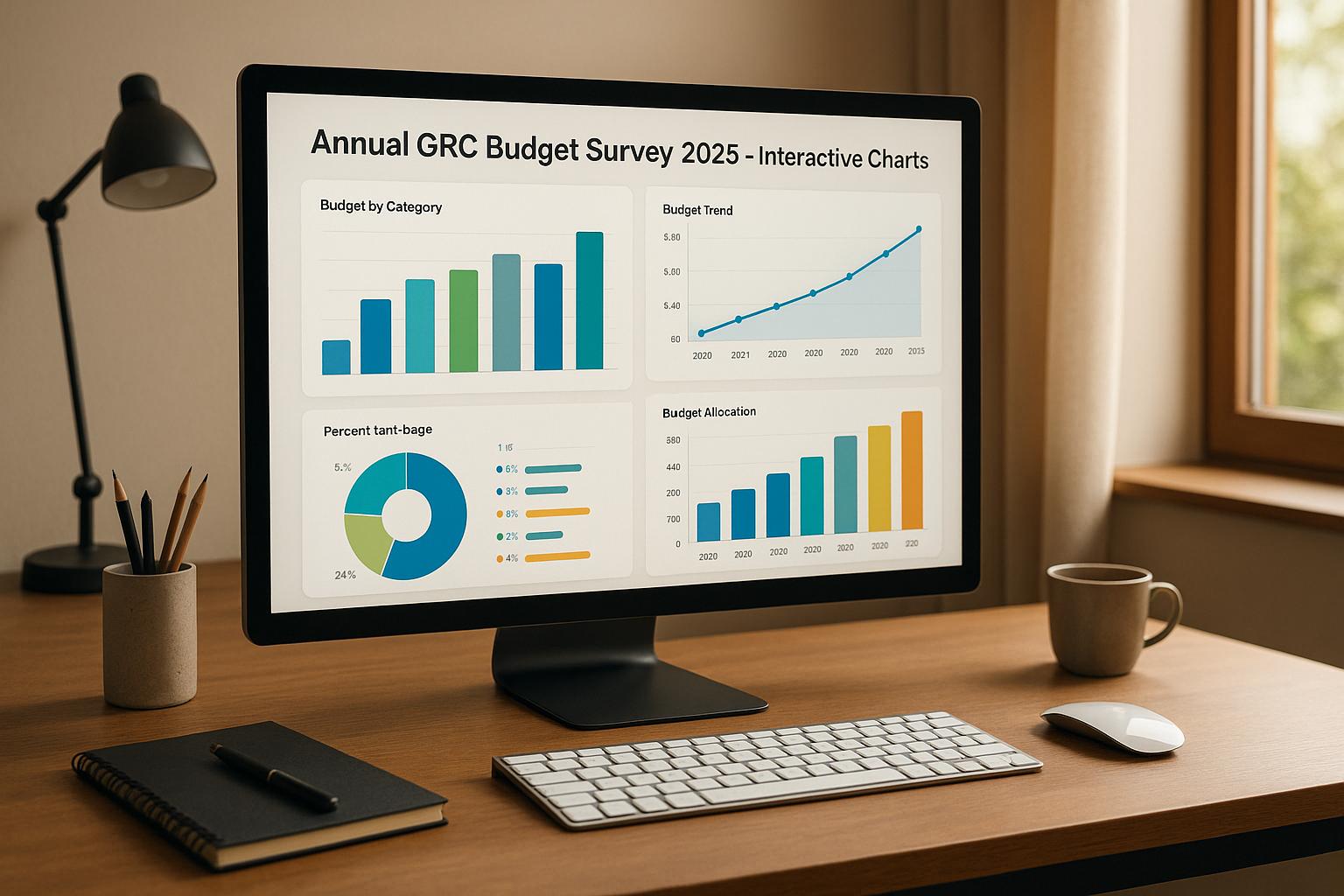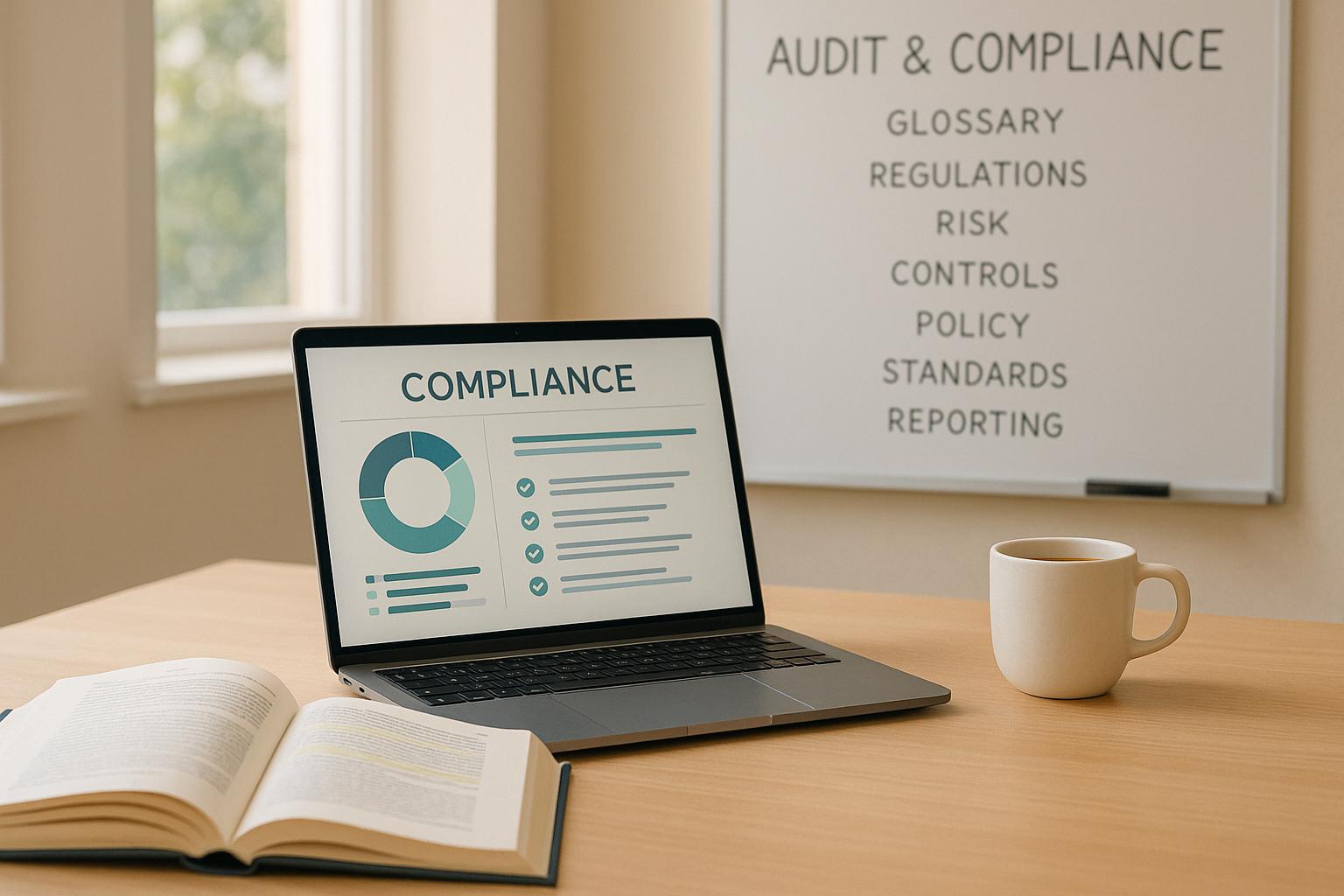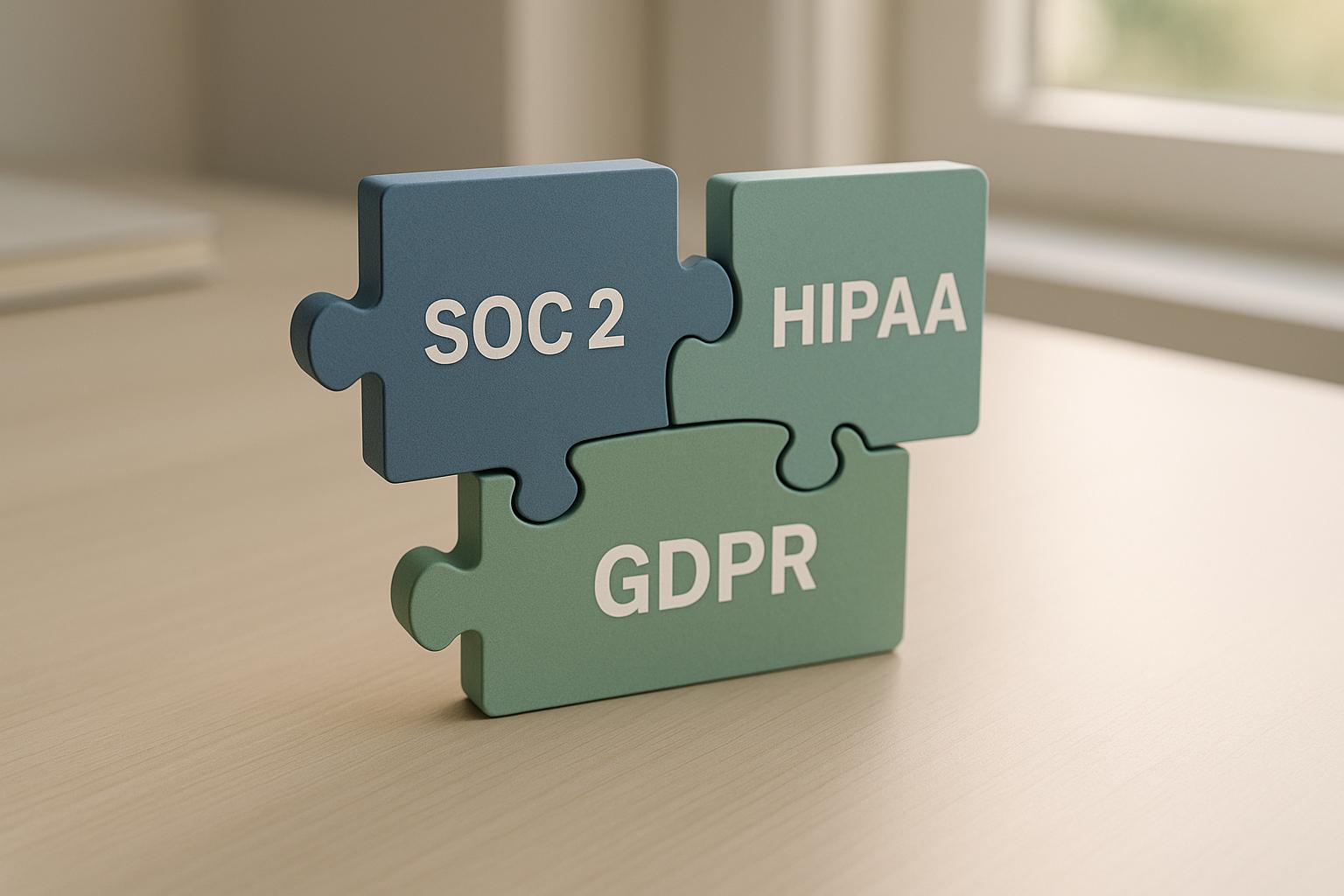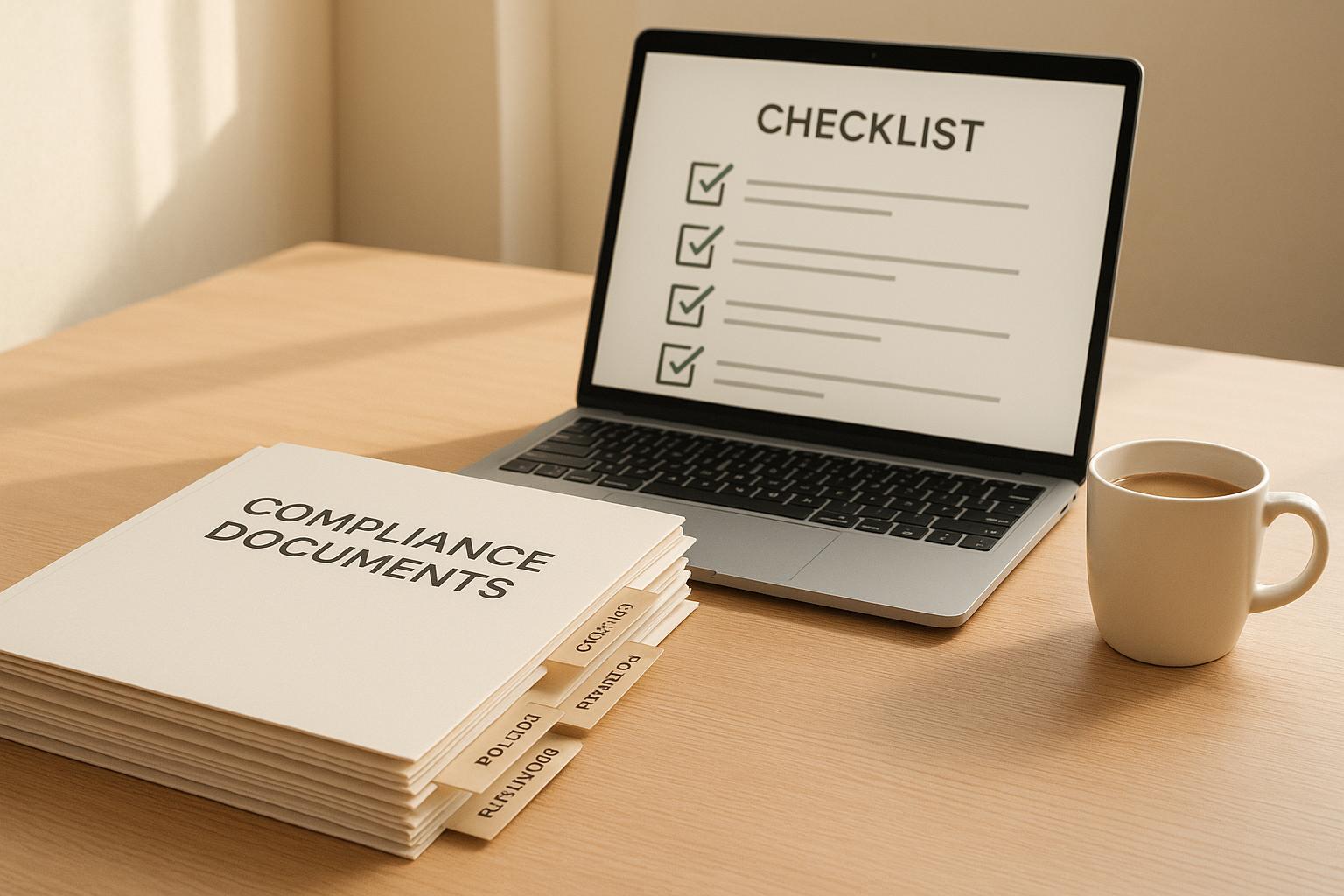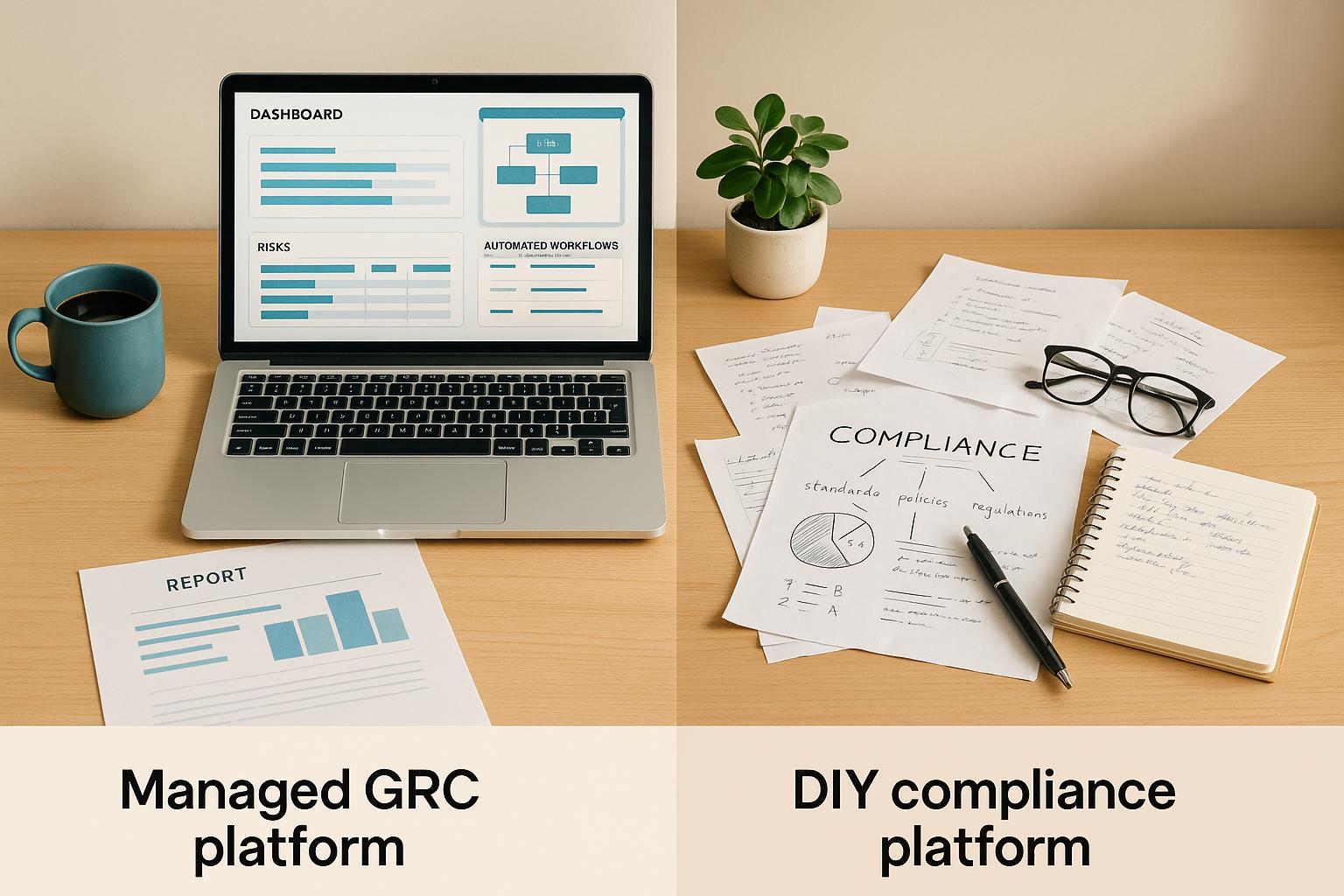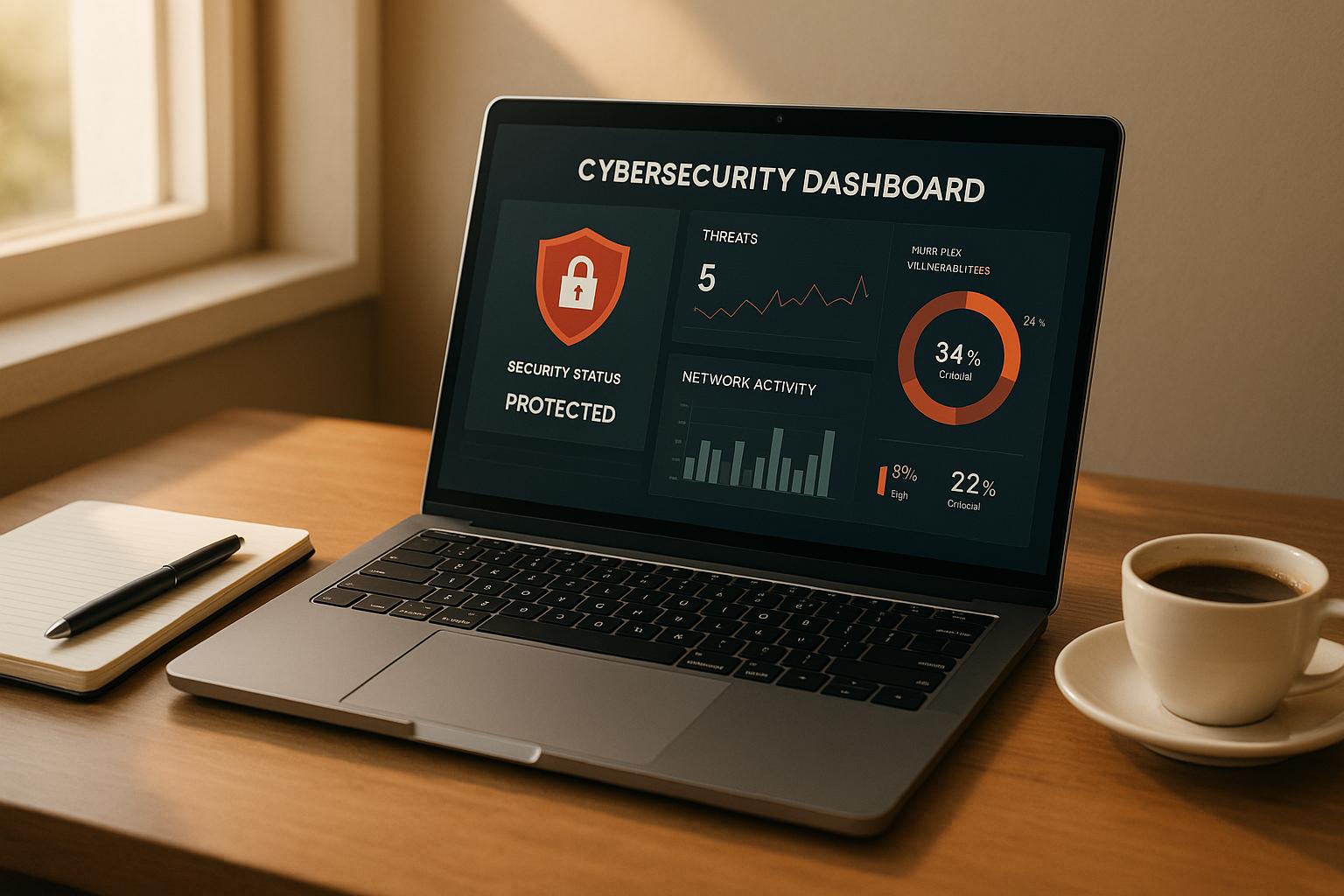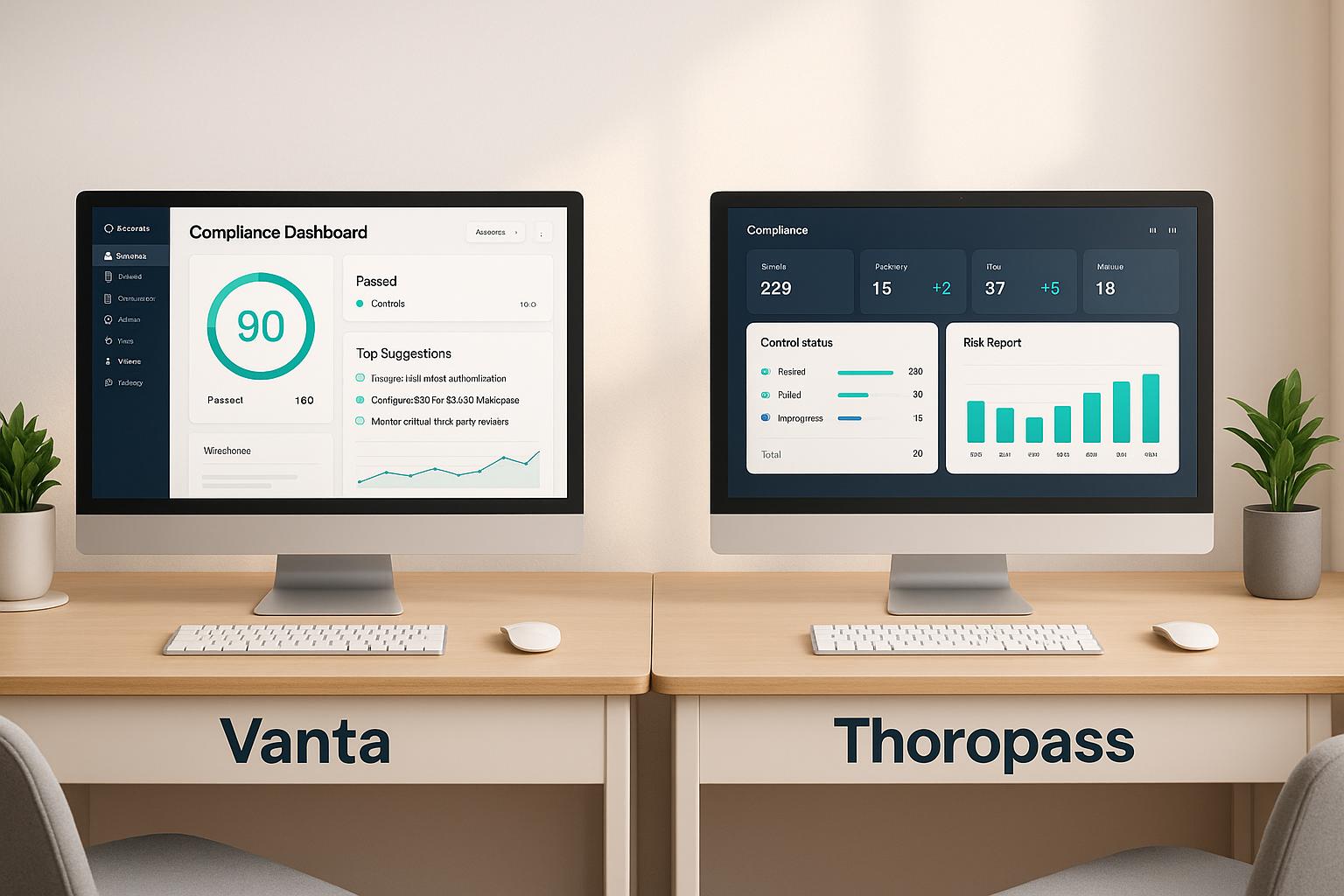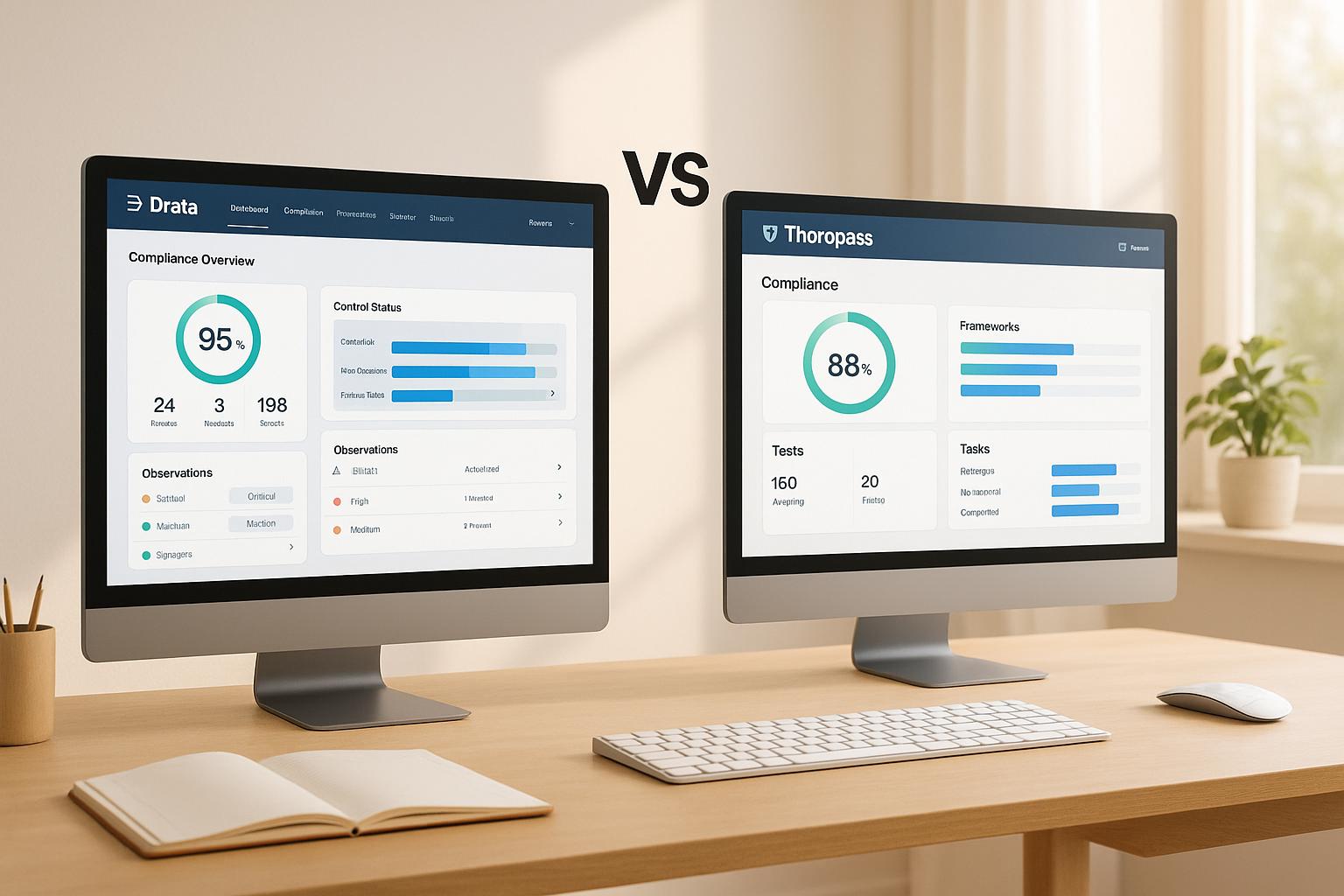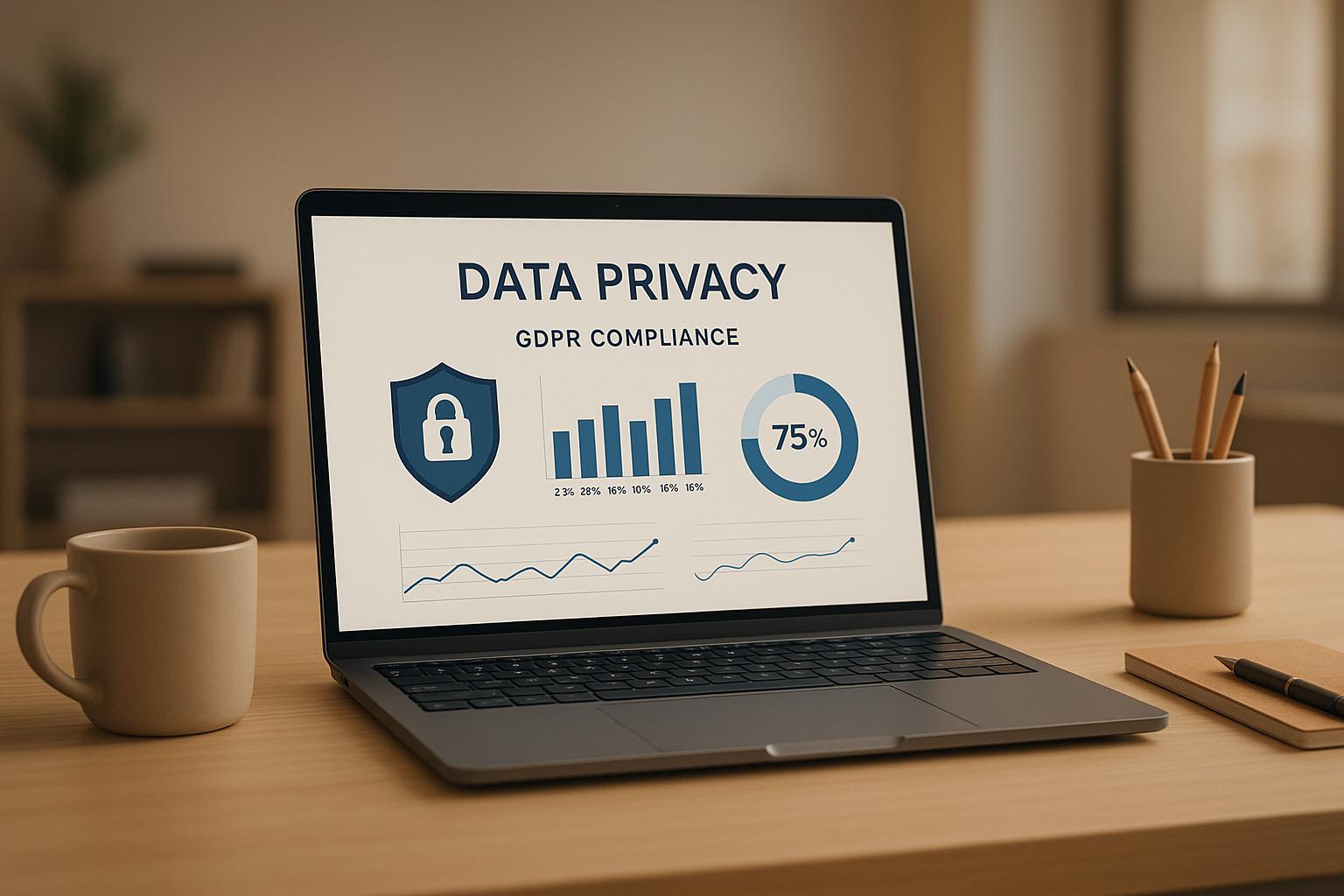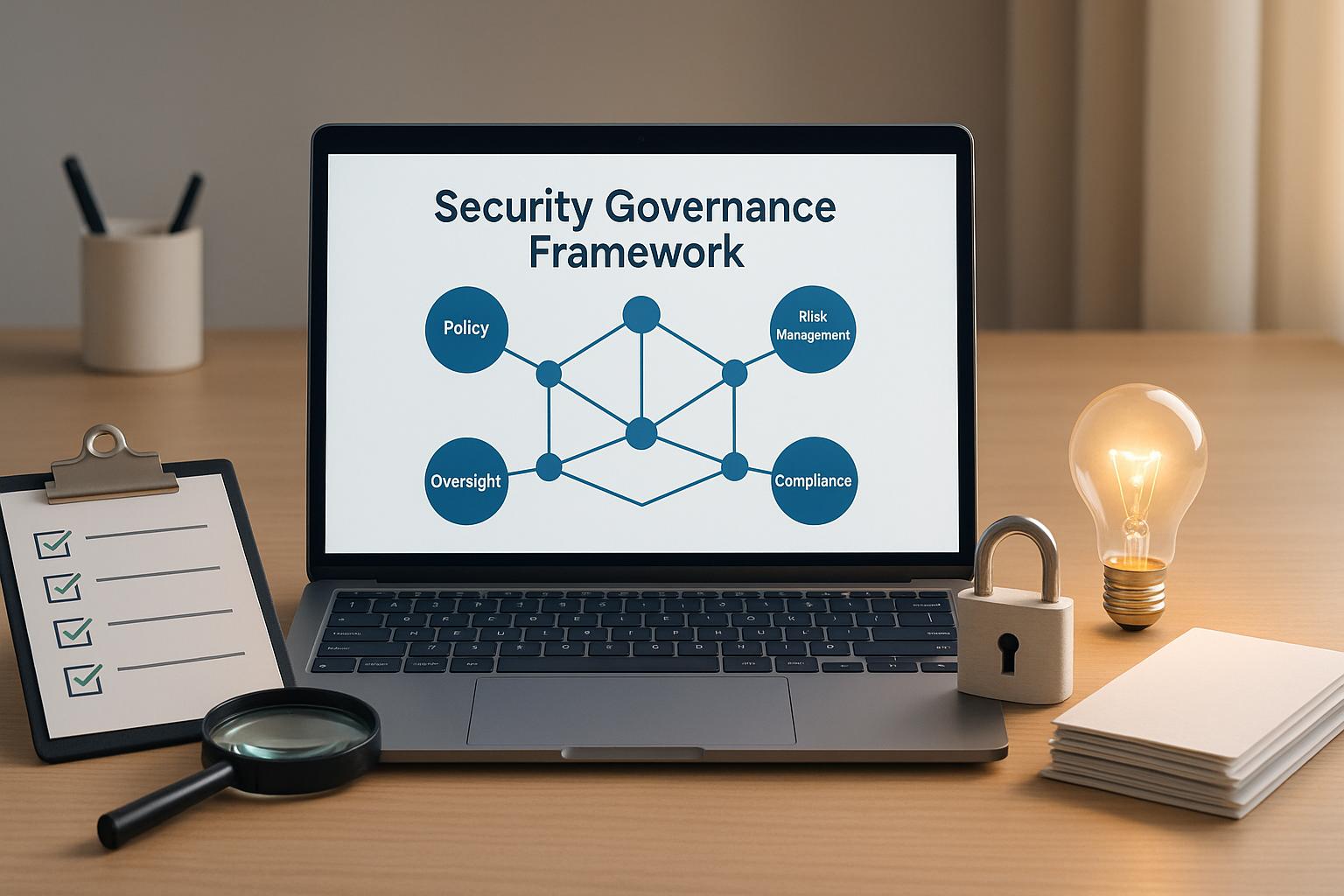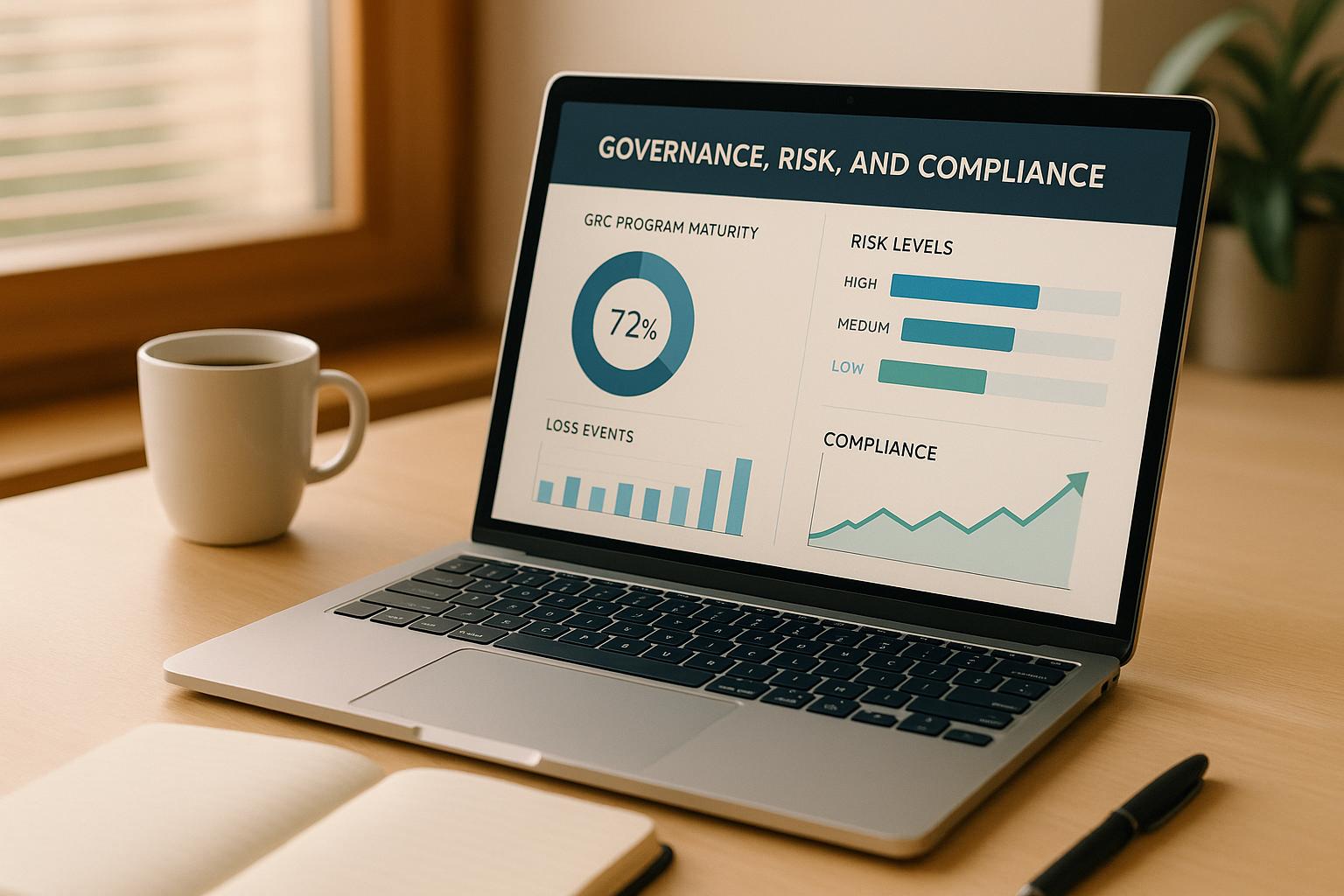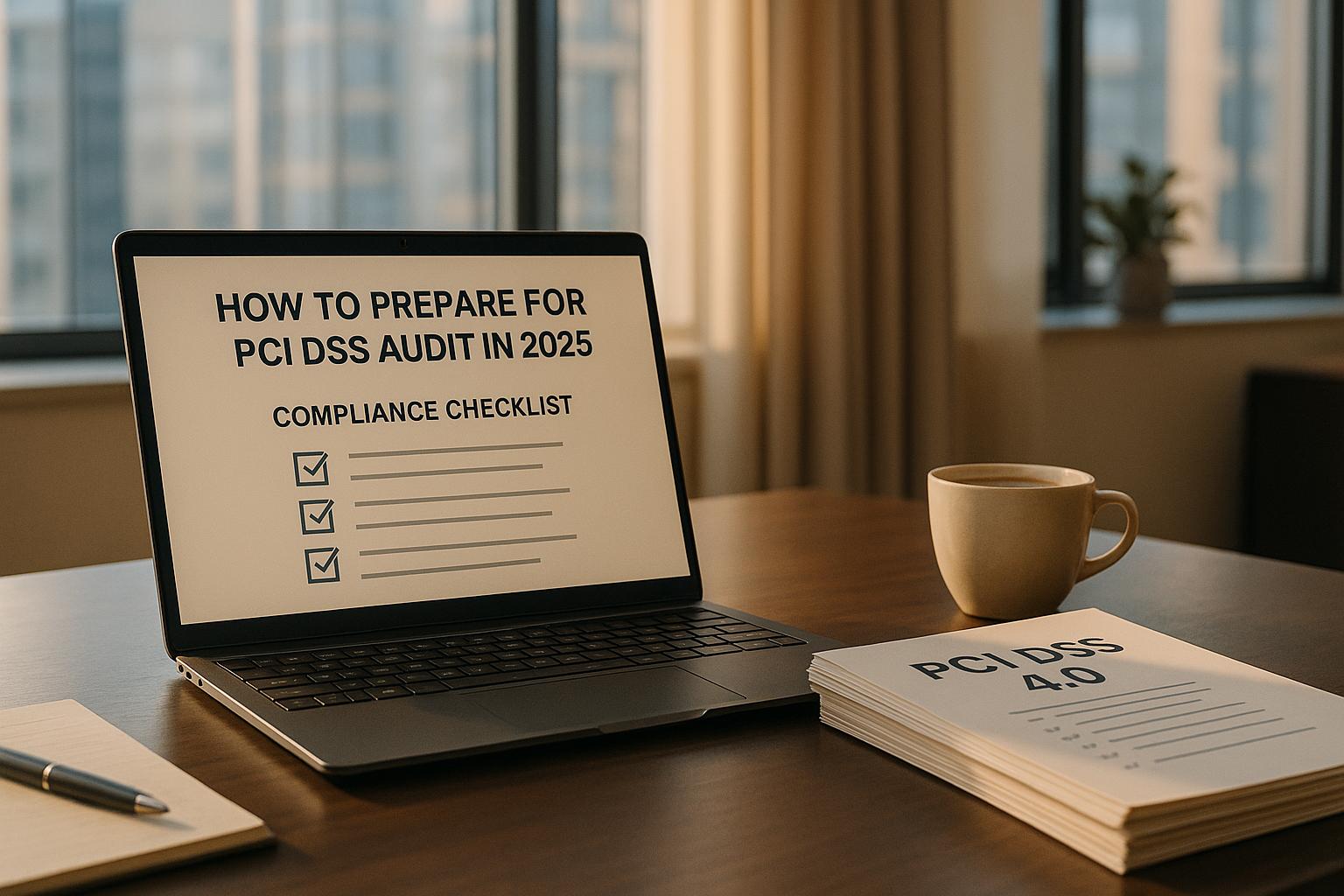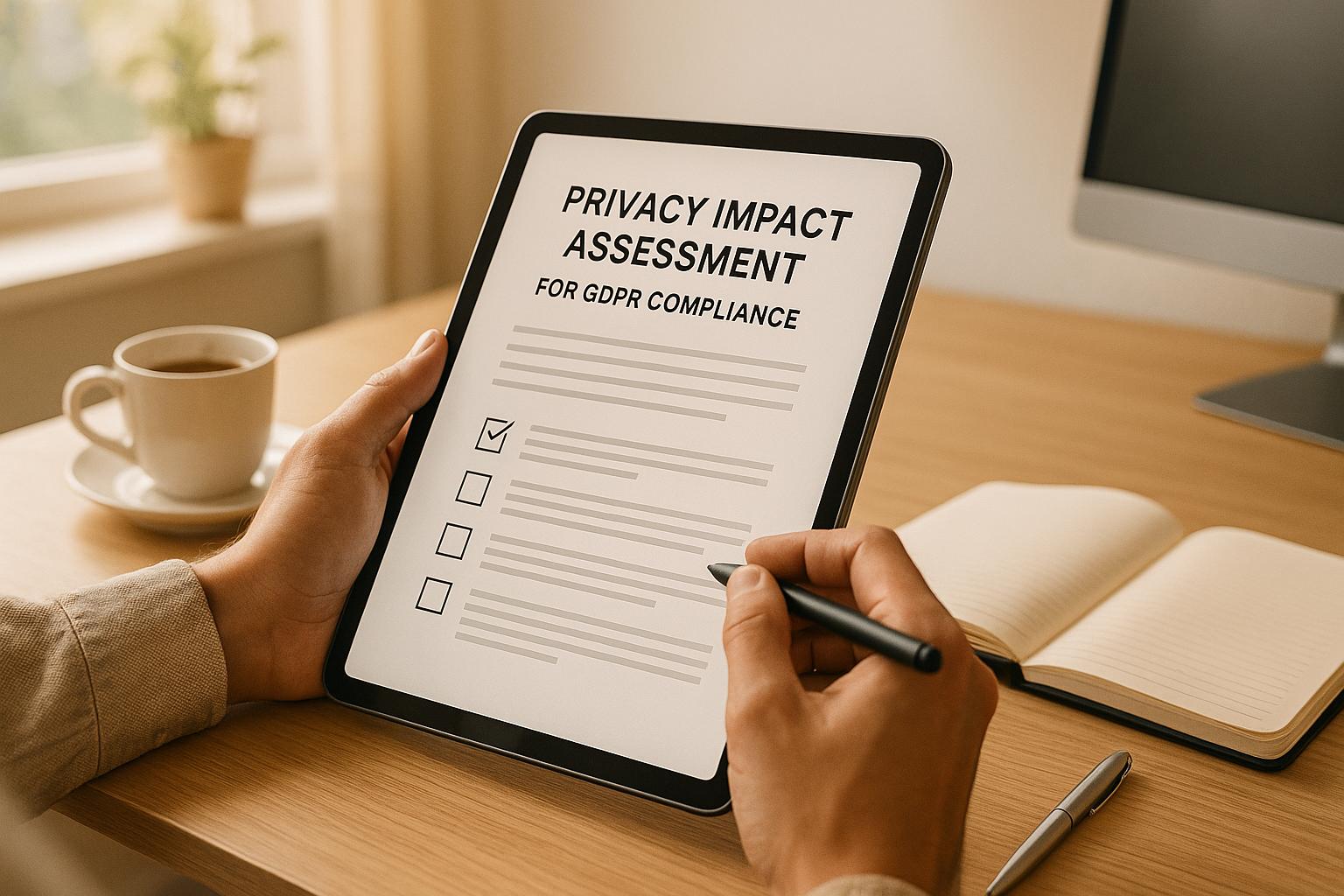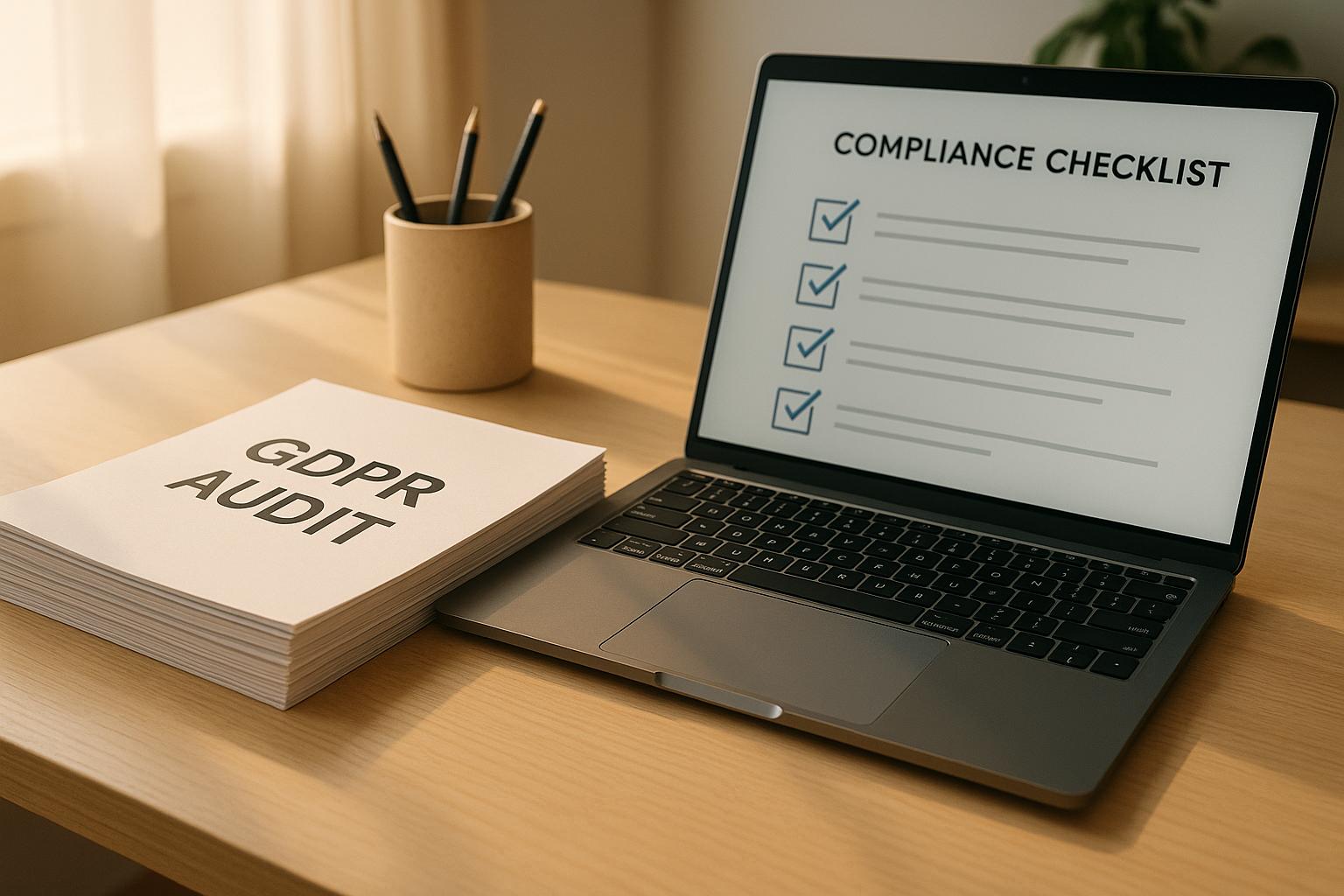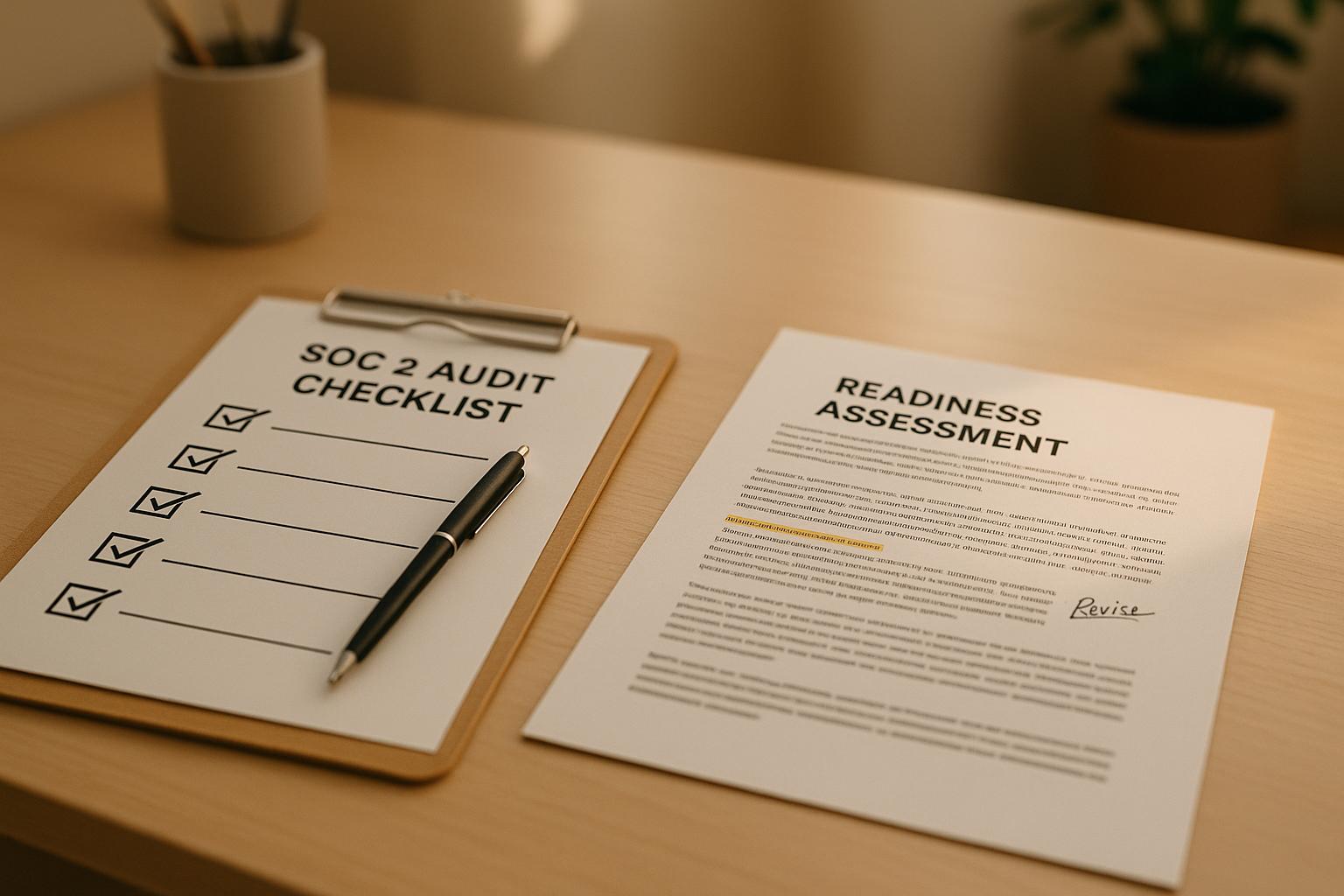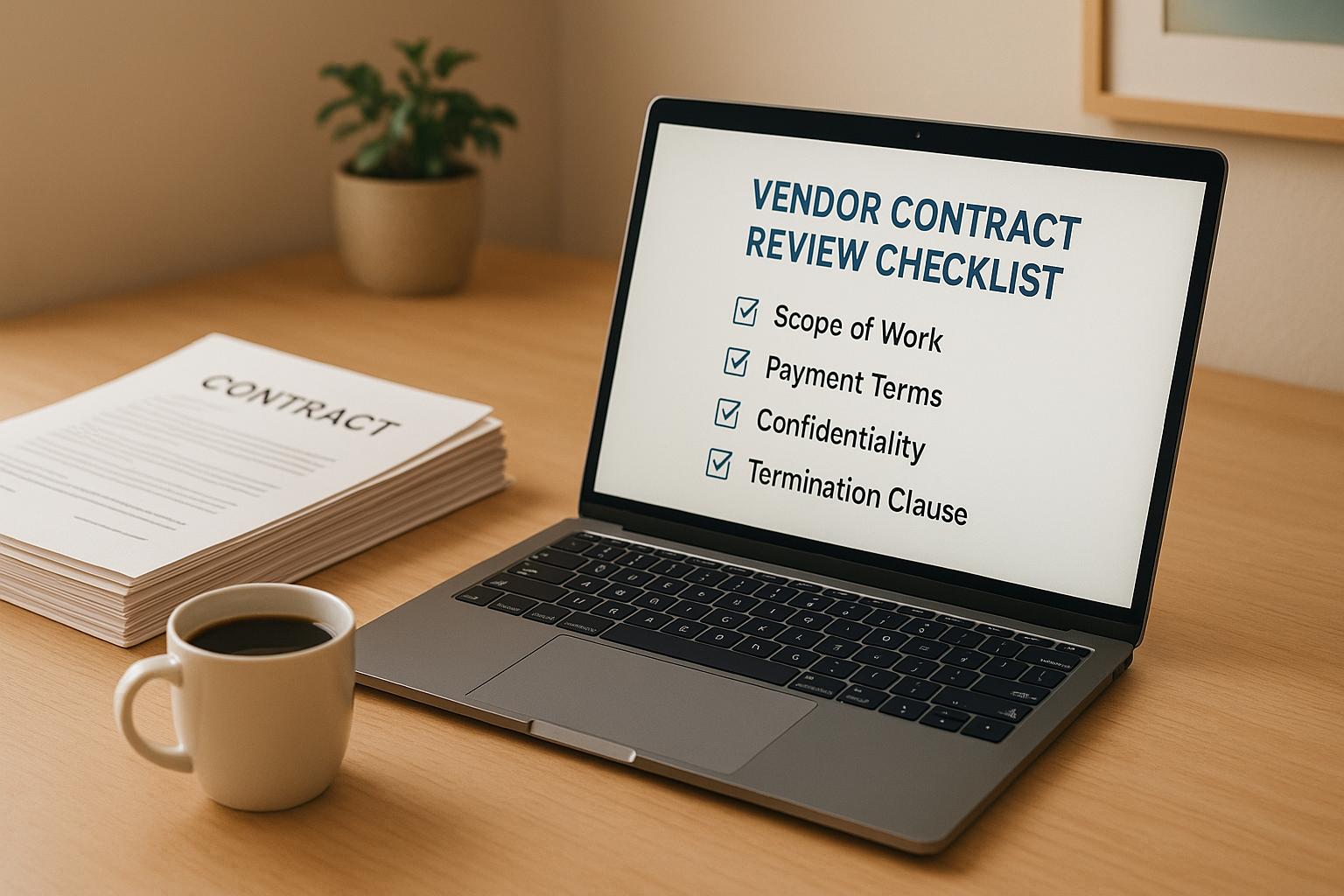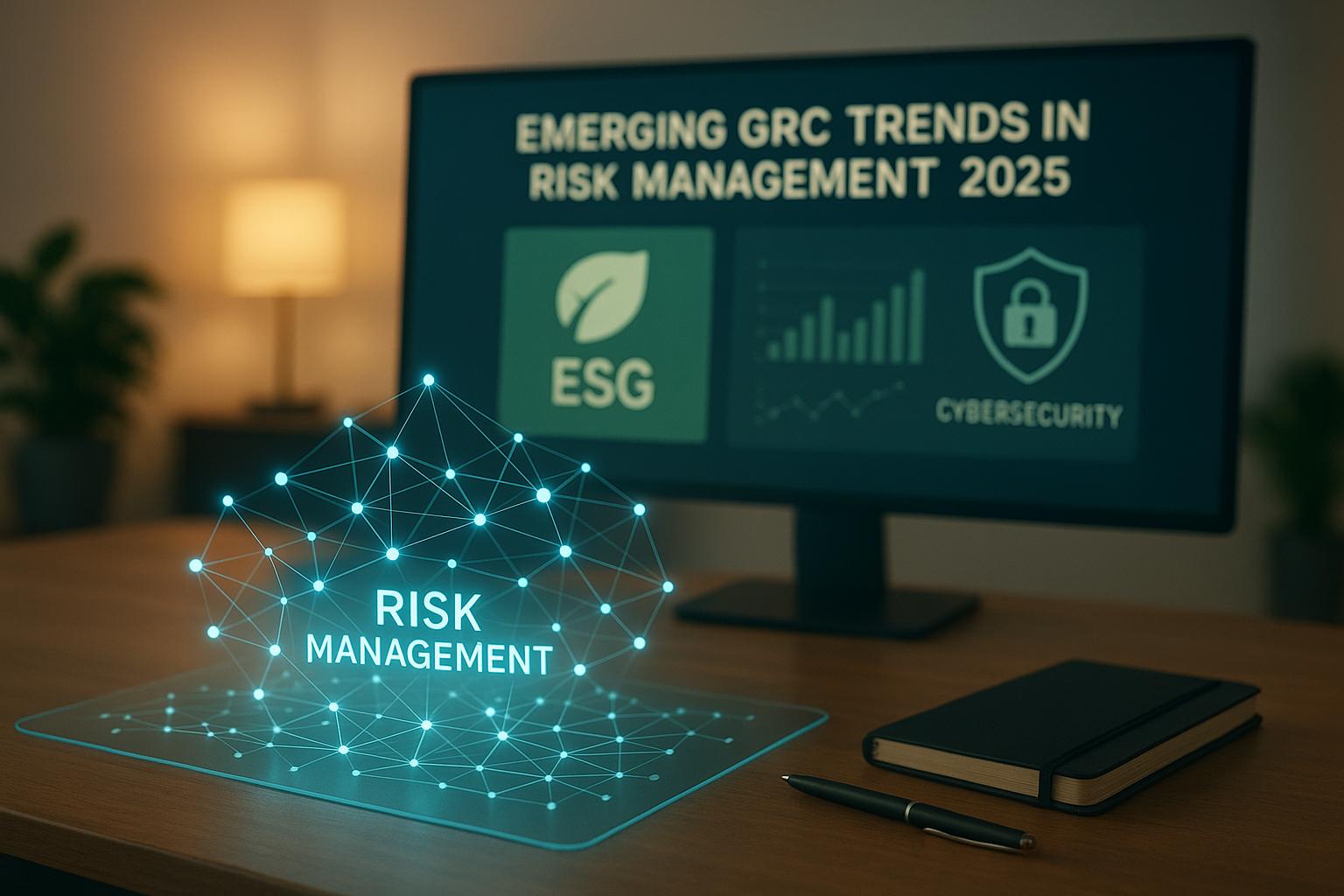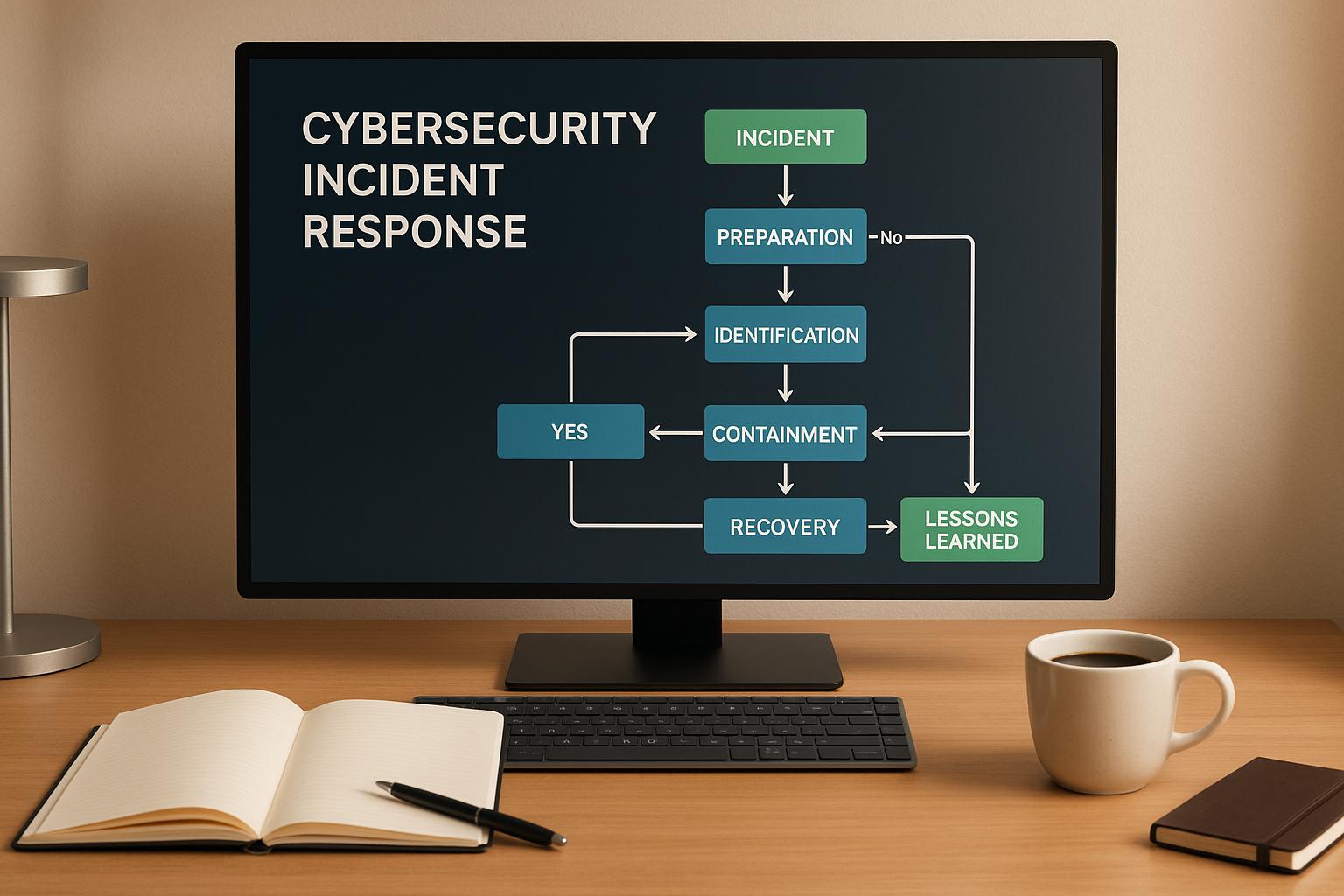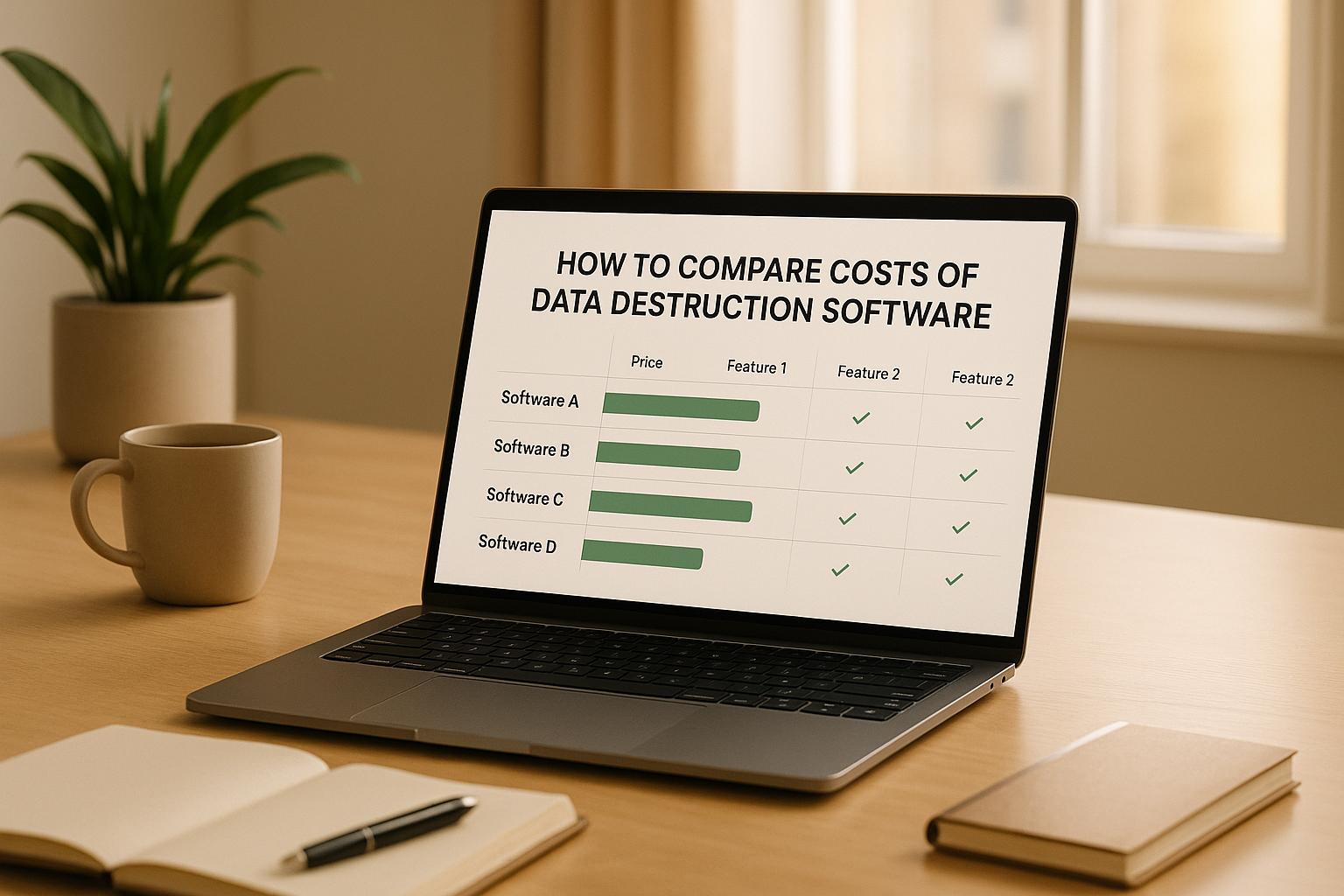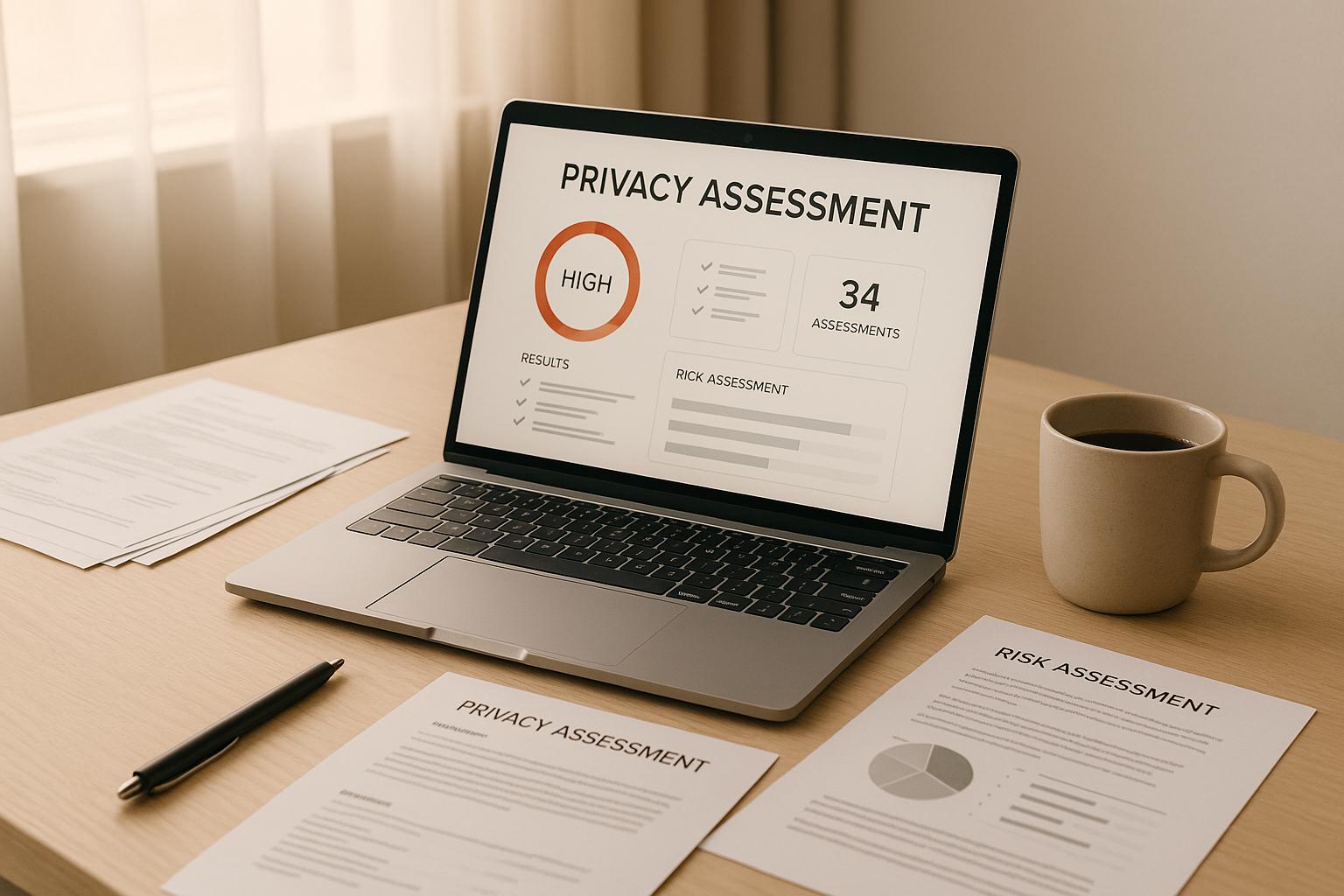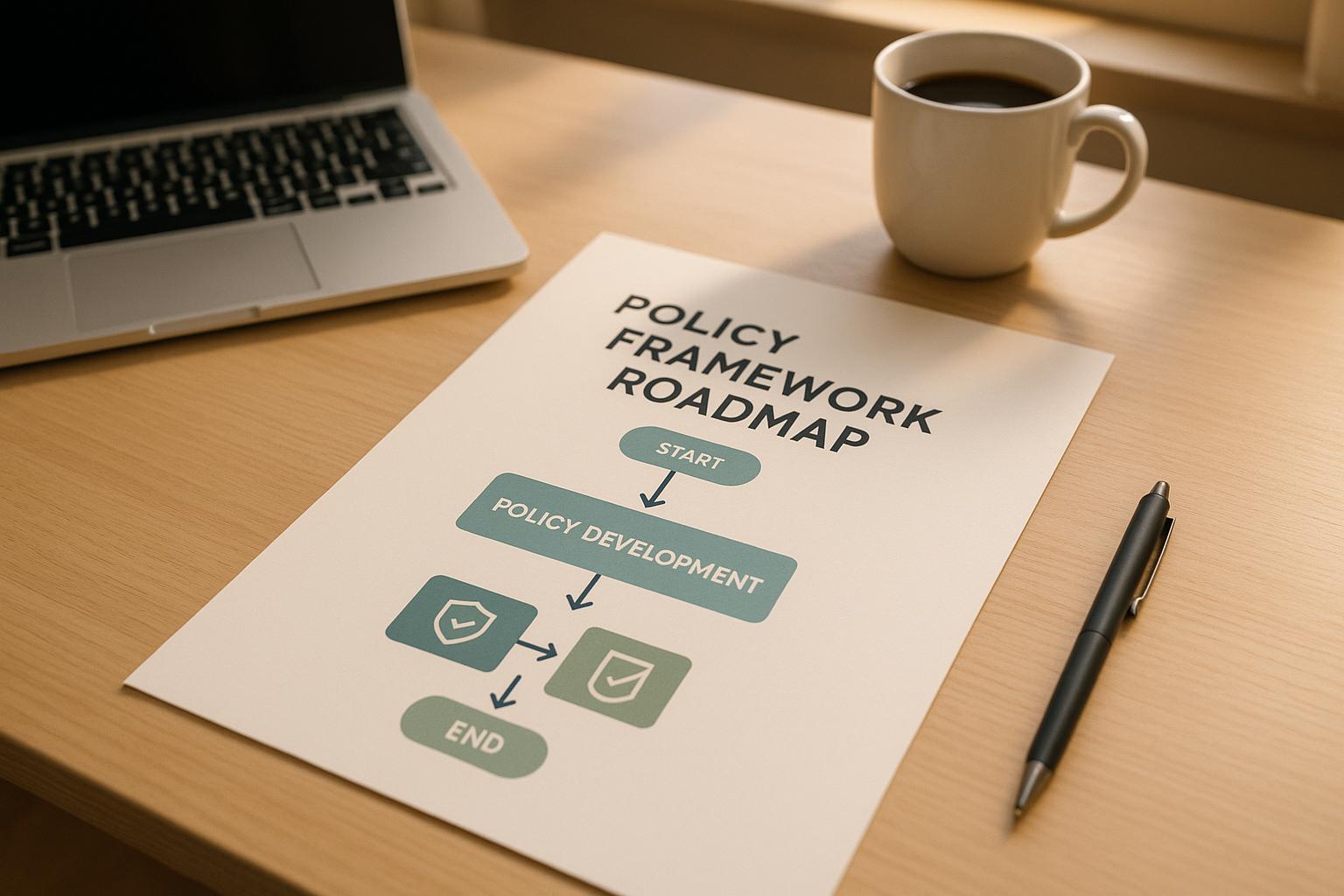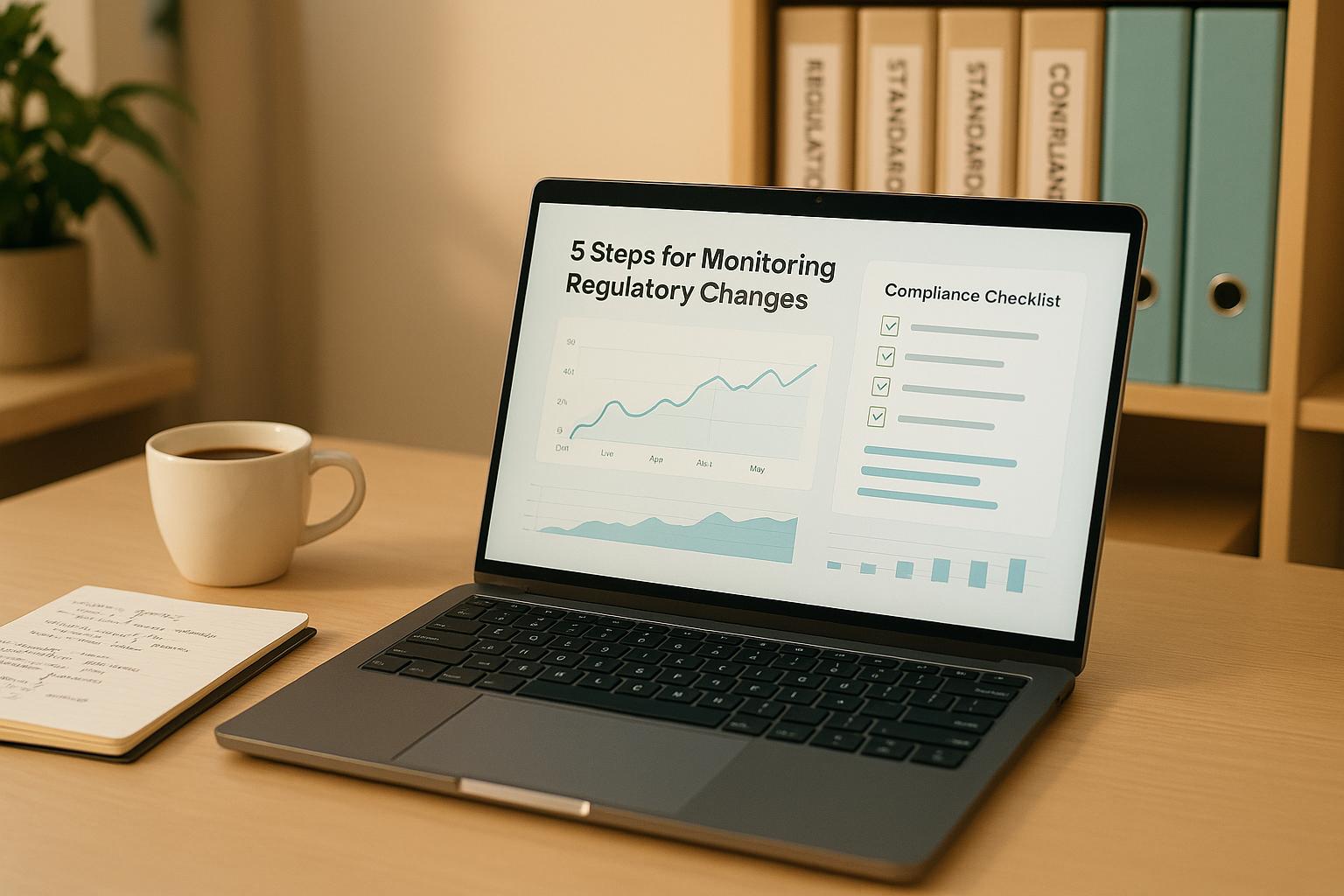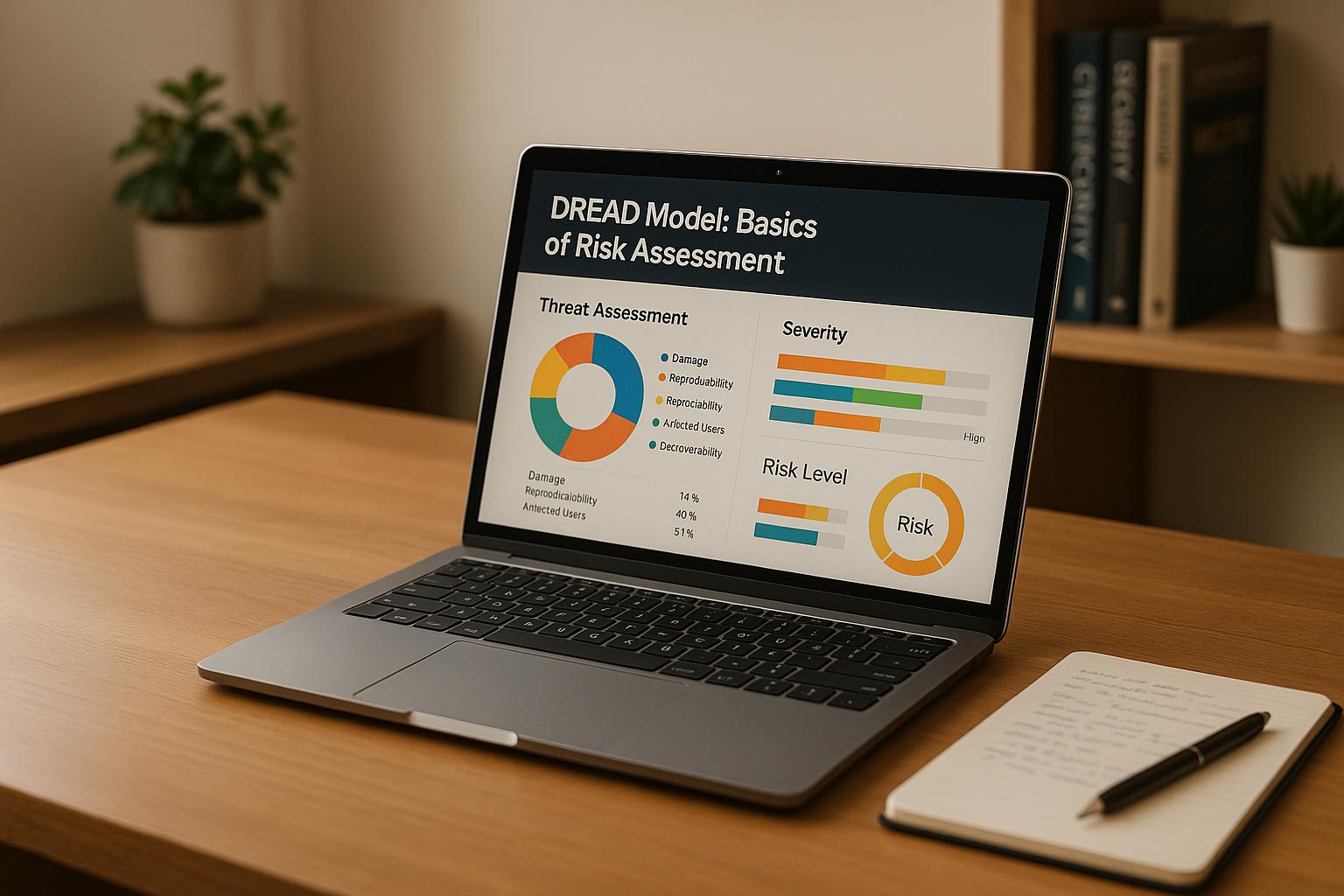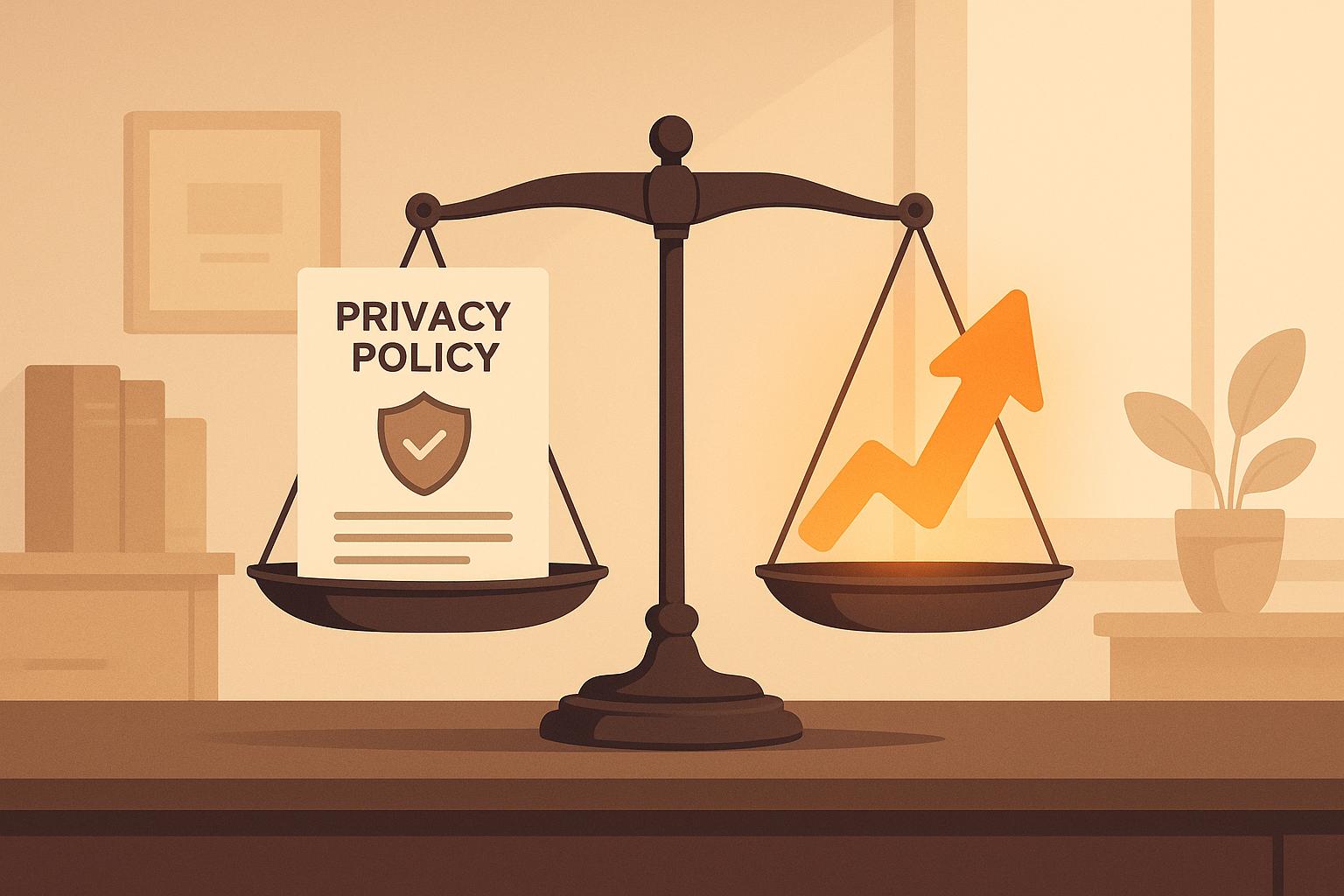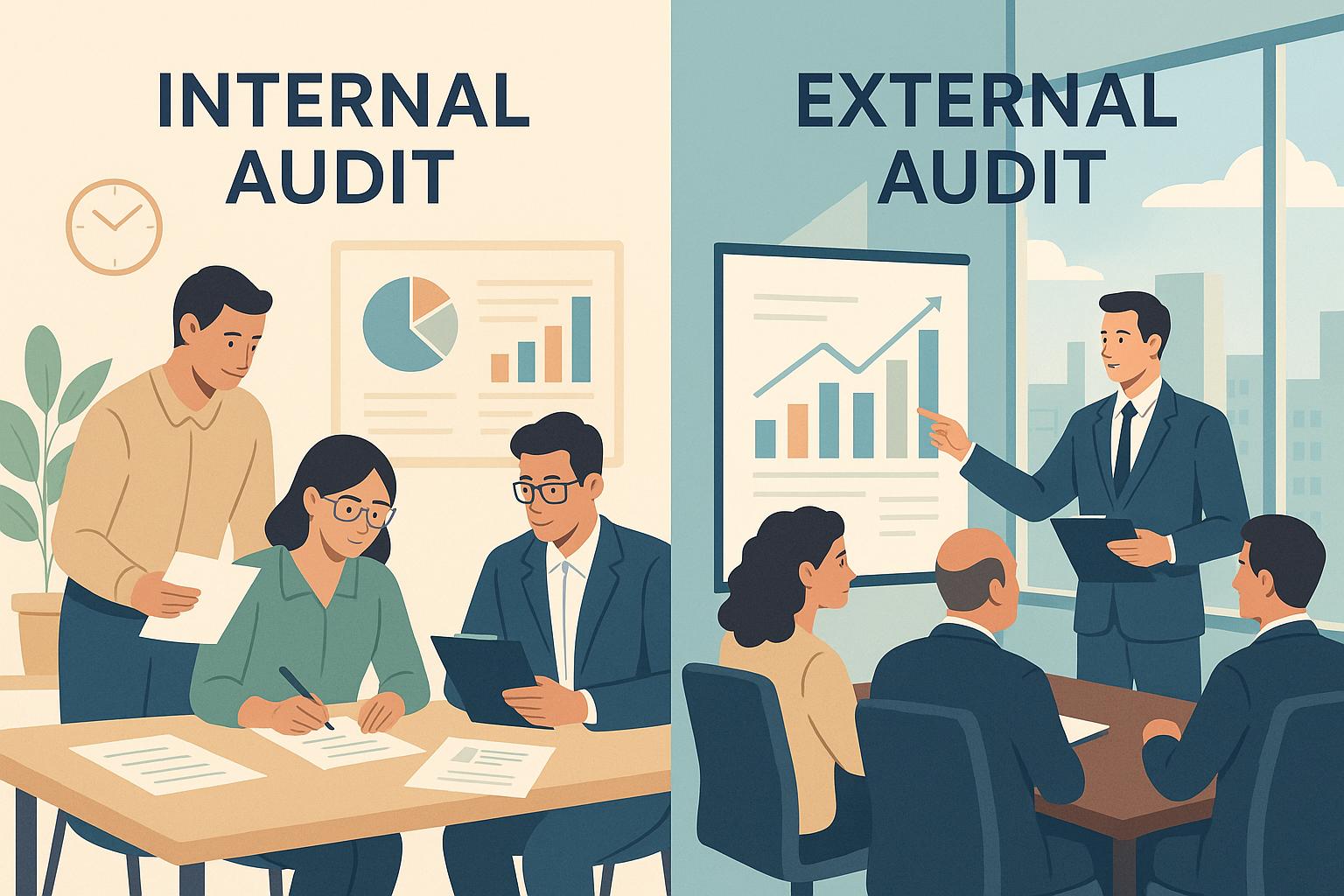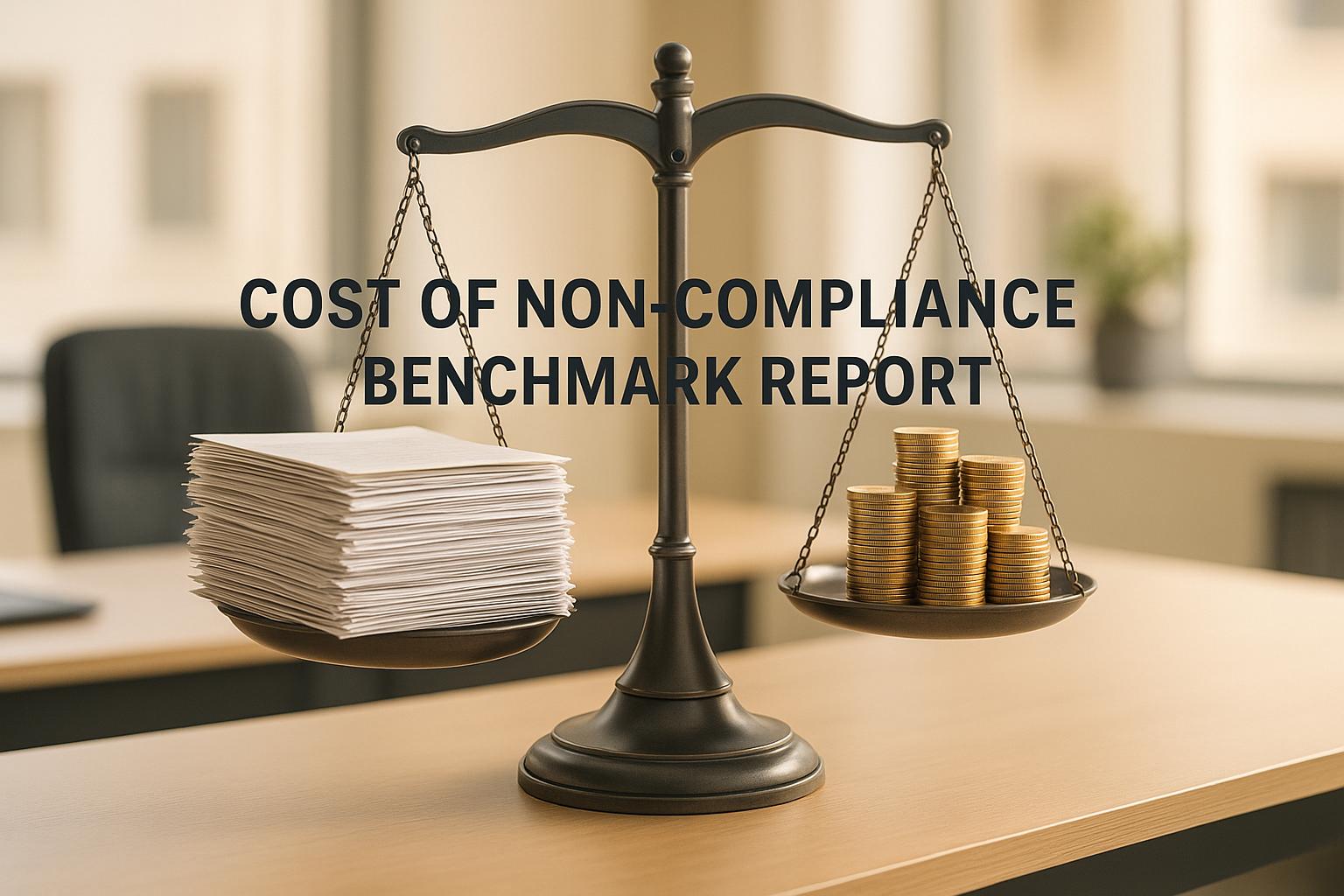
Not following rules costs companies a lot. On average, companies that don't follow rules lose $14.82 million, while those that do only lose $5.47 million. That's nearly 3 times more costly. Here's why it's key to follow rules:
- Data Loss Is Expensive: A data loss event can cost $4.88 million right away and $5.87 million in lost sales.
- Real Fines:
- Trust Loss: 65% of customers lose trust after a data issue.
Big Rules and Fines:
- GDPR: Up to 4% of yearly sales or €20M.
- HIPAA: Up to $50,000 per issue; max $2.1M/year.
- CCPA: $2,500 for each accident, $7,500 if on purpose.
Why It's Good to Follow Rules:
- Companies that put money into this see a 2.71x ROI.
- Costs of issues have gone up 10% each year since 2023.
Staying ahead with rules saves cash, keeps your good name, and keeps customers' trust. Fixing problems later will cost a lot more.
Major Regulatory Frameworks and Their Penalties
Key Rules and Their Costs
Overview of Major Rules
In the U.S., firms face many rules on keeping data safe and private. These rules are not the same in each area and state.
GDPR is for U.S. firms that deal with data from Europe. Often, fines with GDPR are over €4.4 million.
HIPAA covers health care firms, insurers, and linked businesses, to keep health data safe. Over 20.2 million health records were hacked in just the first half of 2022.
CCPA and CPRA are for firms with data from people in California. The California Privacy Protection Agency (CPPA) now works full time and checks for rule breaks. If your firm is in many states, you must follow the toughest rule.
SOC 2 is key for software and cloud firms. Not following it can lead firms to lose deals and harm trust with customers.
FTC Safeguards Rule needs strong security plans for finance firms. NIST guidelines help manage security risks. Both set high money fines for breaks.
Costs of Not Following Rules
What you pay for breaking rules depends on the rule and how big the break was. On average, breaks cost firms $220,000.
GDPR fines are set in two levels. The top fine can be 4% of yearly revenue or €20 million, the bigger one is used. For instance, in May 2023, Meta was fined €1.2 billion for moving data from Europe to the U.S. without good care. Also, in October 2024, LinkedIn Ireland got a €310 million fine for wrongly using user data for ads.
HIPAA breaks can lead to fines between $100 and $50,000 each, with a max of $2.1 million each year per break type. Jail time is also possible. In January 2025, Solara Medical Supplies paid $3 million after a break exposed the health data of over 114,000 people.
CCPA fines change if you meant to break the rule or not. If by accident, up to $2,500 per break; if on purpose, up to $7,500. Unlike GDPR, CCPA doesn't put a limit on total fines. For example, in March 2025, Honda paid $632,500 for stopping people from using their privacy rights.
"Our research confirms what forward-thinking security leaders already know – reactive compliance approaches are exponentially more expensive than proactive programs." - Shrav Mehta, CEO of Secureframe
These cases show why it's key to act early on following rules to dodge big fines.
Rules and Fine Match-Up
Here's a look at fines and how they are enforced in some big rule sets:
| Rules | Top Fine | Who Checks | Big Fine Cases |
|---|---|---|---|
| GDPR | 4% of all money made or €20 million | Groups that keep data safe | Meta: €1.2 billion (2023), Amazon: €746 million (2021) |
| HIPAA | $2,134,831 for each bad thing/year | Office that makes sure of rights | Solara Medical: $3 million (2025), Kids' Medical Center: $3.2 million |
| CCPA/CPRA | Up to $7,500 when done on purpose | Top cop in California/CPPA | Honda: $632,500 (2025) |
HIPAA can hit hard with jail time for big, on-purpose rule breaks. On the flip side, GDPR lets you say yes first, while CCPA lets you say no if you want out.
How big the fines are often links to how bad and how long the rule was broken, if it was on purpose, how fast they tried to fix it, if they worked well with the cops, and what kind of data got messed up.
While SOC 2 doesn't have fines from the gov, not sticking to its rules can end deals right away and hurt ties with others, especially for cloud groups working with big clients.
IBM: Cost of a Data Breach Report 2020 | Chris Scott, Director of Security Innovation
What it Costs When Rules are Not Followed
This part talks about the money lost due to not following rules, looking at costs per event and the bigger effects on companies.
Costs on Average and at Their Highest
Not following the rules costs a lot more than just fines. On average, companies that don't follow rules see each problem costing them $5.05 million. To see this better, think about data problems related to not following rules costing an extra $220,000 on average compared to companies that follow rules. In 2024, the usual cost of a data problem went up to $4.88 million from $4.45 million in 2023 - a big jump of 10%. This rise was the biggest since the pandemic.
In the last ten years, the costs for not following rules have gone up by over 45%, with each problem now costing an average of $5.87 million in lost money. In contrast, U.S. companies usually use between 1.3% and 3.3% of their total pay for keeping up with rules - a small price compared to the huge money lost and legal costs from not following rules.
These numbers show the big money risk and get us ready to look more into how costs change based on the type of business and its size.
How Costs Change Based on Business Size and Type
The money lost from not following rules changes a lot based on the business type and size. For instance, in the money business, data problems cost about $6.08 million each - a 22% rise over the usual cost across all types of businesses. Health places also see big costs due to tough HIPAA rules, with fines from $100 to $50,000 for each problem and yearly limits of $1.5 million for ongoing issues.
| Area | Cost to Fix a Leak | Main Risk Parts | Usual Rule Breaks |
|---|---|---|---|
| Money Services | $6.08 million | Card info, client details | PCI DSS, state privacy rules |
| Health Care | ~$4.88 million | Patient files | HIPAA Security and Breach Rules |
| Tech/Online Service | ~$4.88 million | Client info, EU people | GDPR, SOC 2, state privacy rules |
| Shop/Online Shop | $3–5 million | Payment cards, client info | PCI DSS, CCPA, data leak rules |
Size does matter in firms. A $632,500 fee may be okay for a big firm but can smash a small one. Big firms, good at taking hits, still face wide effects. For example, issues with a lot of users can push up total costs, even if the firm can deal with rules better.
Real Money Loss Cases
Real-life cases give us a clear view of how costly not following rules can be:
- Equifax: The data leak in 2017 hit 147 million users. It made Equifax pay a huge $575 million in deals. Not having simple safe steps was an expensive mistake.
"Companies that profit from personal information have an extra responsibility to protect and secure that data. Equifax failed to take basic steps that may have prevented the breach that affected approximately 147 million consumers."
– FTC Chairman Joe Simons
- Capital One: A big slip-up in cloud safety led to more than $300 million in fines, deals, and fix costs. This sum includes an $80 million fine due to a poorly set web app shield. This error put the info of over 106 million people at risk.
-
Healthcare Sector:
- Montefiore Medical Center paid $4.75 million in February 2024 for likely breaks of HIPAA Security Rules.
- Solara Medical Supplies had to pay $3 million in January 2025 following a data leak that hit over 114,000 people. A second mishap made things worse when 1,531 wrong letters were sent out.
- Gulf Coast Pain Consultants gave out $1.19 million in December 2024 after a fired worker got into the secured health data of more than 34,000 patients and made 6,500 fake Medicare claims.
These stories show a clear pattern: fixing issues after they come up is far more costly than putting money into avoiding them from the start.
sbb-itb-ec1727d
Keeping Up with Rules and Staying Safe Online
More rules and the growing number of online threats are making companies spend a lot of money on compliance. They are using more cash and help to lower risks and avoid fines for not following rules.
More Money and Bigger Teams for GRC
A fresh survey showed that 77% of businesses are spending more on Governance, Risk, and Compliance (GRC), and 63% see this going up in the next year or two. On average, these funds are expected to grow by 25% .
Here's where this money is going:
- 46% for hiring and keeping workers.
- 18% for compliance tools.
- 26% for audits.
- 22% for getting outside help.
- 24% for team costs .
Also, 72% of firms are making their compliance teams bigger. This need comes partly because 42% of firms faced data leaks in the past two years, showing the need for stronger compliance plans.
"Many directors are concerned that they're not being provided with enough information about the risks to the enterprise posed from digital exposure and vulnerabilities, and they're really eager to understand and ask better questions of management." - Amy Rojik
More money is going into keeping up with hard rules, mainly as states change their laws.
Adapting to New Rules
In 2024, seven states brought in new privacy laws, and four started that year. By 2025, eight more states will join, so by 2026, half of the U.S. people will have state privacy laws. For firms working in many states, this mix of rules is a big problem. Each state has its own demands.
At the same time, online dangers are more clever. In the last part of 2024, over 989,000 phishing attacks were noted. By 2025, nearly 45% of firms might face a cyberattack on their supply link. Bad guys are now using smart tech to make very real scam emails and tough malware, making old guards less strong.
"Cybersecurity is a never-ending arms race." - Frank Dimina, Splunk
As rules grow and cyber threats change, companies are changing how they handle following the rules.
Main Points from New Reports
Studies show that firms are getting better at handling risks that come with compliance. About 57% of people say they will spend more time on IT risk control, and 63% plan to put more money into tools for compliance and risk. Yet, many firms still hit roadblocks - 60% do not pass their first GRC check, mostly because they did not get ready well.
"Companies need to be looking at their entire risk profile across the organization and not in these neat little silos… they should focus on their enterprise risk management structure and how it feeds all of these response plans and other resource allocation." - Amy Rojik
Groups now see good GRC and safety steps not just as costs they must pay, but as keys that help them grow and get bigger. This change in how they see things shows how key it is to have plans ready to face rules risks and get set for what comes next.
How to Cut Down on Compliance Risks
Firms now face huge cash loss from not following the rules, costing anywhere from $14 million to $40 million. This is why firms put money and effort into being ready in advance. Not doing so can cost over 2.5 times as much as what they spend on compliance. So, being ready can save a lot of money.
As more is spent on staying compliant, it is more key than ever to use ways to cut down on risk.
Hire Outside GRC and Compliance Help
To deal with the high costs of staying in line, many firms use outside help. This move lowers costs by up to 30% and gives firms skills that their own teams might not have.
Look at Cycore’s Virtual CISO (vCISO) help, for example. This help gives firms the top-level safety advice they need without the high cost of a full-time boss. Their crew helps you deal with hard setups like SOC 2, HIPAA, and ISO 27001, making sure everything is set right and keeps up with rules.
For firms that handle personal info, Cycore’s Virtual Data Protection Officer (vDPO) gives advice tailored to privacy rules like GDPR, CCPA, and new state laws. This kind of know-how is key today.
Also, Cycore’s GRC Tool Admin service makes work easier for in-house teams by taking care of tools like Drata, Vanta, Secureframe, and Thoropass. They ensure tools are set right, kept up to date, and work at their best for your needs.
Use Compliance Tools the Right Way
It’s one thing to have tools; using them right is something else. Tools not set right or not watched well make it so only 56% of firms have strong plans for data breaches.
Auto monitoring helps you stay on top of risks. These tools should give you fast alerts about setup problems and new threats, letting you act fast.
Data cutting is another key move. By only taking the info you really need and having auto rules for how long you keep data, firms can cut down risks a lot. Less sensitive info means less chance for fines if there are breaches.
Encryption is a must. Strong encryption must cover data whether it's stored or moving, and tools must keep an eye on any breaks in protection.
Rules for who can get to data (RBAC) and multi-step sign-ins (MFA) need to be normal in all systems. Making clear rules for who can get to what and making sure of it cuts the risk of leaks.
While setting up tools right matters, keeping an eye on them always is just as key.
Keep Watching and Check Often
Always checking things is a must to stay in line, giving you a live look at how you stand with rules.
Risk checks should happen every few months - or more, if risks are high - to spot and fix weak spots fast. Keeping good records of these checks not only makes audits smooth but also shows you stick to rules.
Teaching staff is key in lowering risks. Regular training should go over safe practices, how to spot phishing, and the rules that matter to your work.
Plans for dealing with issues can't just gather dust. They must be checked often to make sure teams can deal with security problems. A good plan that shows how to spot, stop, and fix issues is key to cut down harm.
When daily tasks include keeping an eye on rules, groups can keep up with new laws and be strong against new risks. Updating privacy rules often to match new laws helps make sure the team follows them and cuts down on rule breaks.
All these steps work together to build a solid way to lessen the money and work risks of not following the rules.
Finish Up: Why Early Safety Steps Matter
Acting quick on safety rules not only cuts costs but also keeps your business safe from big risks. With cybercrime hurting U.S. wallets by a huge $12.5 billion in 2023 and health info breaks costing about $9.77 million each time, putting off these safety rules can cost you a lot of cash.
"Compliance helps businesses gain a competitive advantage by building trust and credibility in the marketplace."
This trust turns into real money gains, mainly when you dodge big fines like Meta's €1.2 billion GDPR fine or British Airways' £20 million data rule fine. With GDPR, firms may get hit with fines up to 4% of their yearly world sales or €20 million. Acting fast lets firms skip these huge costs and shows they are trusty and true in the view of buyers and mates.
More than just dodging fines, acting soon builds trust with others and makes it easier for an org to deal with problems well.
"Cybersecurity compliance is more than a set of rules; it's a strategic tool for fostering trust among customers, partners, and stakeholders increasingly concerned about information security."
Tech plays a key part, but human mistakes lead to most cyber fails - 74% of them. This shows why it's key to train staff well and have good rules to keep safe for a long time.
Being ahead in compliance also help a lot in work. For instance, Cycore's tools give you an edge. By using Cycore’s GRC services, ReadMe saved 1,656 hours a year and cut time on security checks by 66%, making deals fast and helping growth.
Cycore has many services for your needs, like Virtual CISO for security lead, Virtual DPO for privacy rules, and GRC Tool Admin for tools like Drata and Vanta. Covering over 15 rules, such as SOC 2, HIPAA, and ISO 27001, Cycore makes sure companies are always ready for checks and use compliance to shine in the market.
Putting money in forward compliance not just avoids fines but also keeps your good name and makes you strong in a tough rules world. It's a move to keep your group's future bright.










